
Gare du Champ de Mars - Tour Eiffel Train Station

paris-gare-du-champs-de-mars-tour-eiffel-train-station-rer-c

paris-gare-du-champs-du-mars-tour-eiffel-view-from-seine-bank-road
Travel Categories: Metro , Suburban , Train Stations , and Trains Travel Tags: RER C
The train station Le Champ de Mars – Tour Eiffel is a French railway station on the line: Les Invalides to Versailles-Rive-Gauche located on the boundary of a neighborhood known as Gros-Caillou in 7th arrondissement (district) and the neighborhood of Grenelle in the 15th arrondissement (district) of Paris. Opened in February 1867 by the Compagnie des chemins de fer de l’Ouest, today it is a station belonging to the SNCF served by trains from the RER line C (Regional Express Network).
It is in zone: 1 (tarification Ile-de-France) with coordinates 48°°51′ 18″ North, 2°°17′ 21″ East with an altitude of 31 m. It is on the train lines Les Invalides Versailles-Rive-Gauche and Ermont – Eaubonne Champ de Mars with 2: 1 central and 1 service tracks and 2 side platforms serving 11 815 200 passengers (2015) per year.
- Address Quai Branly ( pont Bir Hakeim ) Paris Ile-de-France 75015 France
Sorry , no tourism or travel suppliers are registered yet for this service at this destination. Please adjust your search criteria, try something nearby. You can also change the category to Travel, Lodging, Attractions... or go to the homepage map and categories for other options.
Google Map Not Loaded
Automatic train ticket distributors for the Transilien Paris suburban train network Automatic train ticket distributors for the main line train network Real-time departure and arrival schedules display boards
With OMIO , compare Book the fastest and cheapest Train, Bus and Air itineraries in France and Europe. We've got your back with client service all the way. Reserve 90 days before you travel for the most savings and peace of mind. Check Real-Time Schedules, Prices, and Travel Times and make A SECURE PURCHASE.
Train and bus travel offer you downtown to downtown comfortable and efficient service. No hassle with early arrivals, delays, and luggage security checks. You can take unlimited weight and reasonably bulky items on board. European rail is the way to travel and really see the French countryside. The bus is an excellent cheaper alternative, especially for youth and student travel.
Enter your Departure City, Arrival City, and Dates of Departure and Return for immediate information.
Here's the link if you have a train travel account with RailEurope .
Here's the link if you have a rail account with Trainline .
There are no national trains from this station. You can find all French national train schedules and best ticket prices : Click on your link above.
When you, a couple, or a group travel by train on 3 different days or more in one or a few European countries, buying a European Rail Pass could be your budgetary advantage compared to point-to-point tickets. Click here, or on the banner to see your best options to enjoy more and save money.

There are no national trains from this station. You can find all French national train schedules and best ticket prices : Click on your link below.
Click on this banner 90 days before you travel for the most savings and peace of mind knowing your TRAIN , BUS and AIR tickets are taken care of.
Line 6: Charles de Gaulle - Etoile Nation (via a short walk to Metro station Bir-Hakeim)
RATP Paris Bus Network: 82 and a short distance away 42, 69 and 87
Easily find secure car parking at the best price. You're guaranteed a parking spot by reserving online at this resourceful site with excellent client service.
Pay parking for 20 to 50 cars
Bicycle parking available
From scooters to classics, from BMW to Yamaha, motorcycles can easily be rented in Paris.
Here's a very complete website about bicycling in France with links to locations around the country where you can rent a bike.
FlixBus offers safe and comfortable long-distance travel in Europe . Since its founding in 2013, FlixBus has created the largest transport network in Europe, covering 26 countries and serving more than 60 million passengers. Jump on board one of our green buses and travel throughout Europe. Choose your route from our extensive network; with over 2,500 destinations in 38 European countries, you really can explore Europe!
Planning a backpacking trip in Europe? Want to go on a last minute city break? Or a holiday with your family or friends? No problem at all! We'll take you from A to B at an unbeatable price. With our bus journeys you can choose from France , the Netherlands , Switzerland , Germany , Italy , Austria , Spain and many more countries! – FlixBus provides the travel you want, when you want it!
If you already have an account with Busbud or want to easily compare various companies and find cheap bus tickets for your next trip.
See the Paris Airport Shuttle image below for visual details of the departure and arrival points for:
- The RER B train from both CDG and Orly airports Paris and from CDG Orly
Other Shuttle Options: Private, rapid, Airport Shuttle (in conjunction with BonjourLaFrance. Meets you at baggage exit. No hassle, no waiting, door-to-door transport. Excellent with kids, strollers or bulky equipment. Options for group transfers as well.
We recommend getting a Paris Visite card to travel around Paris which includes transport to/from the airports .
Taxis are available in front of all these arrival and departure train stations.
Automatic photo booth Telephone booth Automatic distributor for snacks and drinks Automatic distributor for newspapers
Suitable ticket counter Magnetic loop for the hearing impaired Wider adapted turnstile Parking spaces reserved for Persons with Reduced Mobility (PRMs)
Accessibility: Reduced Mobility: Call 'Acces Plus' 48 hours in advance of travel to enquire and reserve: +33 (0)8 90 64 06 50 available from 6:00am - midnight. For assistance boarding your train, arrive at the platform at least 30 minutes before departure time. Wheelchairs and boarding ramps are available if required.
There is no baggage storage at this station Suggestion: Ask a shop or hotel nearby and offer them a few Euro
Declare your lost property . Give a precise description. An email will confirm your claim:
- Internet : Create or use your account and declare your claim This page is in French but is accessible from anywhere ... especially when you're visiting France and Europe.
- Telephone : +33 (0) 8 92 35 35 35 (open 7/7 from 8h00 to 20h00 to answer questions and register your claim) or in France 36 35 (0,40 € / minute) then #22
- At a train station : see the map at the bottom of this page for station details
A national database registers all lost and found objects in real time. Search for your object will continue for one monnth. There's a charge of 5/10 Euros, depending on object's value, for restitution of an item.
Another national lost and found service can be found here
Got a question about train travel in France and Europe? Click here and get the answer.
Whether it's about the time needed to transfer trains in a station, savings with train passes , seat reservations, pets or bicycles , etc. these answers have got you covered.
Compare & Book Cheapest, Fastest Train, Bus, Flight routes:
Travel Categories

Top Tips for Visiting the Eiffel Tower in Paris

A surprising fact about Paris’ iconic Eiffel Tower: During its construction and prior to its unveiling for the Universal Exposition in 1889, it was decried and even hated by countless “tastemakers” and artists of the time.
Many felt that the tower, constructed from over 18,000 individual pieces of metal (primarily iron) by Gustave Eiffel and his engineers, was an eyesore on the Parisian skyline. Due to this unpopularity, there were many calls for its dismantling.
But that, of course, was not to be. It’s now so beloved that it’s practically synonymous with the city itself, even though most locals don’t spend much time there (and many have never even visited it!) Still, when it bursts into scintillating light at the top of each hour after nightfall, you’d be hard-pressed to find someone who can keep their eyes away.
Before you go, here are our top tips for making the most of your visit to the Eiffel Tower, especially on a first visit.
Explore This Article
1. Learn a Bit About the Tower’s History & Architecture

I always find that reading up (at least briefly) on the places I intend to visit greatly enhances my appreciation and understanding of them, because I’m not going in blind.
And when it comes to the Eiffel Tower, there are perhaps few monuments in the world more obscured by simple clichés. It can be hard to really see it for what it is, or place it in its historical context, since our brains so stubbornly view it as a symbol of Paris rather than, well, a remarkable feat of architecture and engineering for its time.
When it was constructed at the turn of the 20th century, metal was not a material widely used to construct buildings or towers– and plans to erect a tower that would rise some 300 metres/985 feet would have seemed, well, a massive feat.

The project from Gustave Eiffel, the engineers Maurice Koechlin and Emile Nouguier, and a team of architects was chosen from among over 100 other proposed towers to grace the Champ de Mars; ground was first broken in January 1887. Its construction was remarkably speedy, despite being highly complex: it required some 7,300 tons of wrought iron and between 150 and 300 workers to achieve. 22 months later, it was inaugurated.
One of the biggest challenges for the engineers and designers was to allow the mostly-iron structure to stand up to strong winds. Precise mathematical calculations were made to allow for the supports to hold and for the entire structure to withstand strong gusts.
It was in the nearby suburb of Levallois-Perret that the tower’s 18,000+ pieces were created, then assembled onsite. The design of each tiny piece was incredibly precise and required painstaking assemblage, which produces the metal latticework effect of the finished tower.
In the months its inauguration at the Universal Exposition in 1889, the tower drew some 2 million visitors and quickly gained global fame as the largest man-made structure in the world– significantly tamping down critique.
But some continued to hate it: the French writer Guy de Maupassant is famously rumored to have eaten lunch at the tower’s restaurant every day, since it was the only place in the city you couldn’t see the structure. (On a side note, that’s not actually true– there are plenty of spots where you can’t see it at all).
What many don’t know is that the tower wasn’t meant to remain standing for more than 20 years. Gustave Eiffel had secured a permit to allow it to grace the skyline for two decades– no more. But because his creation was also considered to be a useful radio tower, the permit was extended– and with time, it became so iconic and beloved that tearing it down was unthinkable.
These days, the Eiffel Tower is affectionately known as “La Dame de Fer” : “The Iron Lady”
It became a French historical monument in 1964, and part of the UNESCO World Heritage Site in Paris in 1991. Today, it’s the world’s single-most-visited monument that charges entry fees, and over 7 million people visit it on average each year. It remains the tallest structure inside the Parisian city walls. Many people believe it to be shorter than the Montparnasse Tower, but the latter is around 100 feet shorter.
For a more in-depth history of the Tour Eiffel, see this page.
2. Admire Eiffel’s Towering Achievement, From Way Up High
![tour eiffel gare Tan Peng Chong [CC BY-SA 3.0 (https://creativecommons.org/licenses/by-sa/3.0)], from Wikimedia Commons](https://parisunlocked.com/wp-content/uploads/2018/11/Night_view_of_La_Tour_Eiffel_taken_from_Tour_Maine-Montparnasse-1024x575.jpg)
Wondering whether it’s worthwhile to go up to the top of the world’s most-famous tower, which rises ton nearly 985 feet ? I certainly believe it is, at least once . All but the sportiest and most adventurous will want to eschew the nauseating prospect of climbing the 669 stairs to the first level, body exposed to wind and plunging heights.
Hoping to climb all the way to the top? Sorry: the stairs leading from the first floor to the summit are closed to the public. (There are, by the way, a total of 1,665 stairs from the ground floor to the top…)
But taking the elevators up to the third-floor observation decks affords pretty unbeatable views of the city. Glass floors and enormous windows give you some of the best panoramic vantages around– and from here you can also admire the tower’s artful construction from up close. A number of panoramic indicators help you to accurately spot Parisian landmarks including the Trocadero, Invalides, Sacré Coeur in Montmartre, and the Arc de Triomphe.
Book skip-the-line tickets to The Eiffel Tower (with optional Seine cruise) here (with Viator)
On the top deck, you can visit a recreated version of Gustave Eiffel’s office, complete with uncanny, life-sized wax figures of the engineer and the American inventor Thomas Edison.
There’s also a champagne bar and a model of the tower as it appeared in 1889, in its original red-brown hue.
3. Take a Tour to Dig Deeper

One mistake I see a lot of first-time visitors to “La Tour Eiffel” make? They spend an hour in line, then rush up to the observation decks, poke around, take a few selfies and panoramic shots, buy a couple of postcards at the gift shop– then leave.
Unless they’re the type to read up on a site before visiting (as I suggest above) or to lug an old-fashioned guidebook around, it’s unlikely that they’ve actually engaged with the place beyond a superficial level.
{Related: The Best Things to Do in Paris on a First Trip}
Taking a guided tour can avoid that scenario. Knowledgeable guides and docents can offer more historical context for what you’re seeing, point out hidden details you may not have noticed otherwise, and (hopefully) answer any questions you might have.
There are myriad tours available out there, so shop around a bit before deciding which might be best for you. GetYourGuide offers a reasonably priced guided tour of the Eiffel Tower that includes direct access by elevator to the observation decks.
You can also book skip-the line tickets and a guided tour of the Eiffel Tower here (via Tiqets.com)
4. Consider Enjoying a Meal at the Eiffel Tower (for the Views & the Food)

If you want to extend your stay and the fabulous views from up on high, you might consider lunch or dinner at one of the Eiffel Tower’s onsite restaurants.
Madame Brasserie is located on the first floor and offers a slightly more relaxed French brasserie vibe, while the gastronomic second-level restaurant, Le Jules Verne is significantly pricier and degrees more formal.
Current menu items at Madame Brasserie, helmed by Michelin-starred chef Thierry Marx, include pork belly with beluga lentils, carrots and celery, roasted baby leeks with herbed oil and orange vinaigrette, and, for dessert, buckwheat crumble with apple and pear confit, salted caramel sauce and crème fraiche.
Le Jules Vernes, meanwhile, boasts a Michelin star and is headed by celebrated Chef Frédéric Anton. You can view the current menus here.
You’ll also find a champagne bar, buffet-style snack bars and onsite gift shops at the tower to keep you entertained once inside.
5. Try to Beat the Crowds
As we mentioned earlier, la Tour Eiffel is visited by millions every year, and that can mean long lines and overcrowded conditions. Not exactly the ones you want, in other words.
To beat the crowds, consider visiting in low season (roughly early October to early March) or go as early in the morning as you can and aim to be there 15 minutes or so before opening time. Weekdays can sometimes be quieter as well, but again, if you’re visiting during peak tourist season you’re unlikely to see calm conditions even outside of weekends.
Booking tickets in advance and skipping the long lines/queues is also a good potential strategy. You can book skip-the-line tickets with optional direct access to the summit here (via GetYourGuide) , or book tickets with priority entrance and audio guide here (via Tiqets.com).
6. After Your Visit: Head to Rue Cler
![tour eiffel gare besopha [CC BY 2.0 (https://creativecommons.org/licenses/by/2.0)], via Wikimedia Commons](https://parisunlocked.com/wp-content/uploads/2018/11/Marché_Rue_Cler_75007_Paris_France_2014-1024x683.jpg)
One of the problems many tourists encounter “post-Eiffel” is figuring out what else to do in the area. It can feel a bit sterile, and it’s not uncommon to see visitors walking around looking a bit confused and uncertain of where to head next.
One place I strongly recommend is the nearby Rue Cler, a delightful street lined with traditional shops and greengrocers. Just a short walk from the tower by taking Rue de Grenelle, the street is understated but full of charm.

Rick Steves has called it one of his favorite streets in the city, and it’s regularly lauded as one of the finest destinations for anyone with gourmet proclivities. You can also stop for coffee or lunch on one of the pleasant terraced cafes in the area.

Bakeries and patisseries , fresh produce, small boutiques selling fine foodstuffs, fish and flower vendors– there’s a wealth of traditional goodies peddled on the street, which somehow manages to preserve the vibe of a small village. It seems far, far away from the hordes. And that’s a good thing, right?
Eiffel Tower: Getting There & Practical Info

The Tour Eiffel is located in Paris’ 7th arrondissement, on the left bank of the Seine River. It’s close to sights and attractions including the Bateaux-Mouches river-cruise boarding area, the Musée d’Orsay, the Trocadero and the Champ de Mars.
{Browse & Book Eiffel Tower Tickets, Tours & Experiences Through Viator}
- Address: Champ de Mars, 5 Av. Anatole France, 75007 Paris
- Metro: Bir-Hakeim (line 6), Ecole Militaire (line 8) or Trocadero (line 9); or take the commuter-line RER C train to the Champ de Mars-Tour Eiffel stop. A note to visitors with limited mobility: The Tower is a 10 to 15 minute walk from each of these stations
- Information (tel): +33 (0)8 92 70 12 39
- Ticket prices and opening times: These vary greatly depending on season, how many levels you wish to visit, etc. Visit the official website for more info; you can find specific information on ticketing and opening times here .
Like This? Pin & Share!
Editor’s Note/Disclaimer: This post contains some affiliate links. While using them to book an experience or tour will come at no additional cost to you, they help to fund more free, in-depth features like this one at Paris Unlocked. Thank you.

Courtney Traub is the Founder and Editor of Paris Unlocked. She’s a longtime Paris resident who now divides her time (as well as she can manage) between the French capital and Norwich, UK. Co-author of the 2012 Michelin Green Guide to Northern France & the Paris Region, she has been interviewed as an expert on Paris and France by the BBC, Australian Broadcasting Corporation, Le Figaro, Matador Network and other publications. Courtney has also written and reported stories for media outlets including Radio France Internationale, The Christian Science Monitor, Women’s Wear Daily and The Associated Press. In addition to going down various rabbit holes of curiosity when it comes to French culture, history, food and art, Courtney is a scholar of literature and cultural history whose essays and reviews have appeared in various forums.
Leave a Reply Cancel reply
Your email address will not be published. Required fields are marked *
Explore Topics
Recent posts.
- Paris’ South Pigalle District: Exploring Rue des Martyrs & Beyond
- Best Food Markets in Paris: Produce, People-Watching & More
- Best Cheese Shops in Paris: Our Favorite Fromageries
- Accessibility in Paris: Our Full Guide to Getting Around
- Privacy Policy

Paris Unlocked
How To Get to the Eiffel Tower From Anywhere in Paris
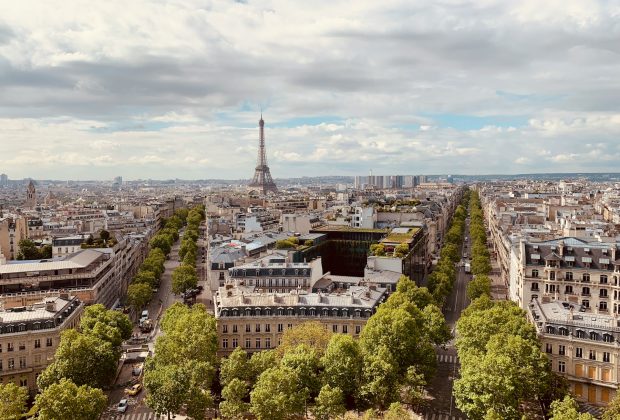
Wherever you’re in Paris, a metro stop is never far away. Add a superb RER and bus network, and it really doesn’t matter where you choose to stay. Whether you’re in a budget-friendly arrondissement or a suburb, you can be in the center of Paris with, at most, one changeover.
The Eiffel Tower is arguably the most important sight to search out for visitors to the City of Light. While you can stay in a nearby hotel or even get a room with a view of the Eiffel Tower , chances are that you’ll stay in a different arrondissement.
Luckily, Paris has a fabulous public transport system, with reliable buses, very regular metro lines, and fast RER trains that connect you with the suburbs. Here are the best and fastest ways to get to the Eiffel Tower from wherever you are staying inside or just outside of Paris.
Pro tip: If you’re a first-timer in Paris, don’t try to maneuver through Châtelet station. While it offers many options and great connections, it’s vast and confusing. You’ll likely end up spending more time getting between lines than you’ll save using one of the options avoiding Châtelet.
From the 1st arrondissement to the Eiffel Tower
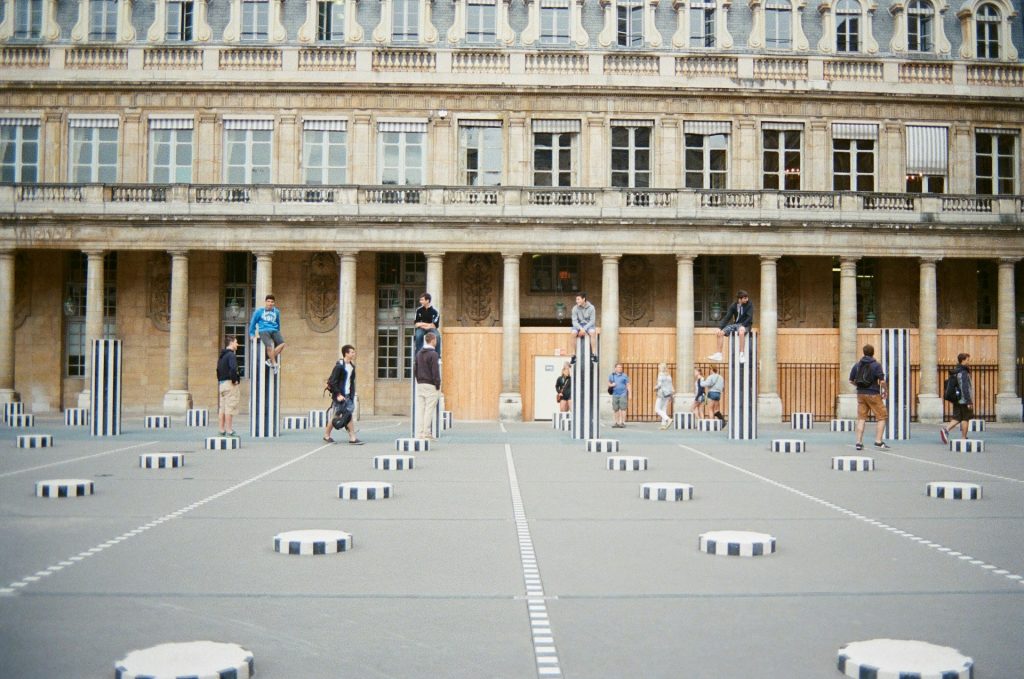
If you’re lucky enough to stay in the 1st arrondissement, then you’re right in the heart of Paris. You’re close to the Louvre with access to all the best connections across the city.
While you could easily walk along the Seine to the tower, you can also hop on the bus 72 at Louvre-Rivoli, toward Parc de Saint-Cloud, and exit at Pont Bir-Hakeim, at the foot of Trocadéro, and walk across the bridge.
Or take metro 1, toward La Défense, and change at Franklin D. Roosevelt into the metro 9 toward Point de Sèvres and exit at Trocadéro to walk down to the Eiffel Tower, along one of the most iconic approaches.
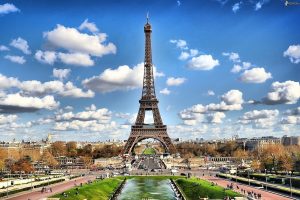
See the Eiffel Tower with a local guide
2éme, the fashionable sentier.
From the 2nd arrondissement, the easiest and direct way to get to the Eiffel Tower is by metro line 9, from Grand Boulevards direction Pont de Sèvres, and exciting at Iéna. From there it is a lovely 7 minute walk along the Seine, or you can hop onto bus 82 toward Luxembourg and get out at Tour Eiffel.
3éme, the hip Haut Marais
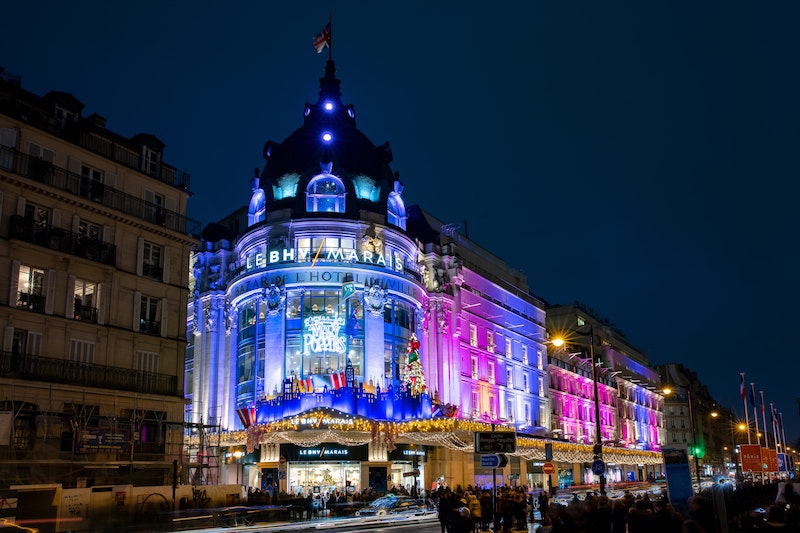
The lovely old quarter of the Haut Marais is a hugely popular quarter to stay in. With the station République in the northern part, you have plenty of options. The metro line 8, direction Balard, takes you to Ecole Militaire at the bottom of the Champ de Mars, with a nice approach. Line 9, direction Pont de Sèvres, allows you to walk down from Trocadéro.
For a bus ride, take the 69 toward Champ de Mars and exit at RAPP- La Bourdonnais, basically in the middle of the Champ de Mars.
4éme, Marais and Saint-Paul
This little arrondissement is spread between the Haut Marais and the Seine. You have Saint-Paul in the north, where metro 1, direction La Défense takes you to Franklin D. Roosevelt. From here, you change into the metro 9 toward Point de Sèvres, and exit at Trocadéro.
Or take the 69 from Saint Paul toward Champ de Mars and exit at RAPP- La Bourdonnais. You could also take the 72 from Pont Marie in the direction of Parc de Saint Cloud, and exit at Le Notre, at the bottom of Trocadéro.
5éme, the Latin Quarter
From the Latin Quarter , on the same side as the Eiffel Tower, you can, if you are staying near the Seine, hop into the RER C at Saint-Michel Notre Dame, heading westwards, either in direction Versailles or Pontoise. Both stop at Champ de Mars Tour Eiffel, after just four stations.
For a ride with a view, take the 86 bus from Rue de l’École de Médecine just off Odéon, which takes you to Rapp La Bourdonnais by the Champ de Mars.
6éme, Saint-Germain-de-Prés and Luxembourg
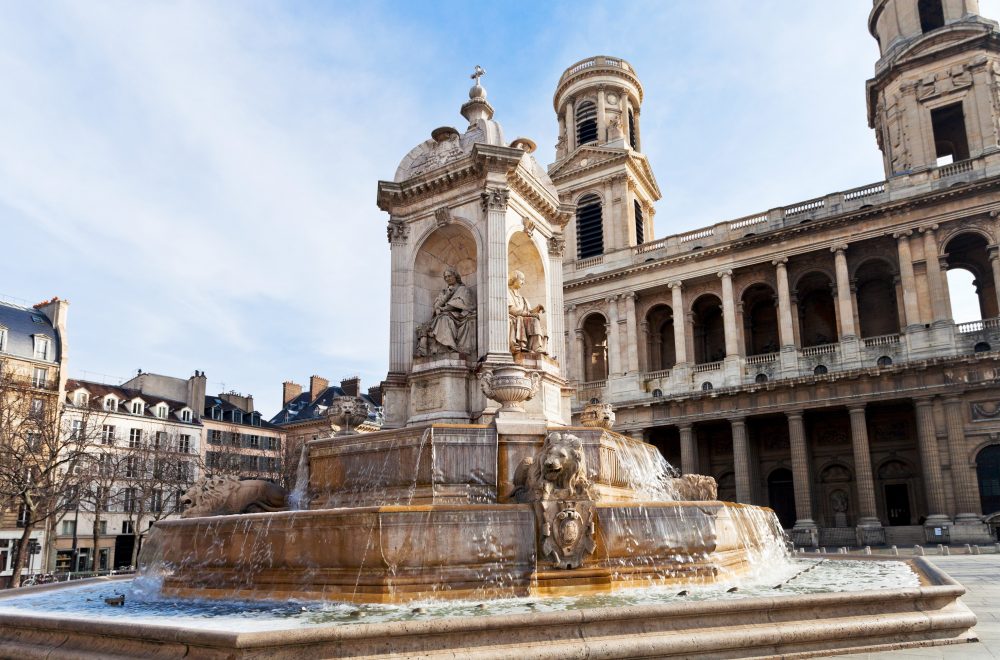
Metro line 10 meanders through this quarter around Saint-Germain-de-Prés and you can take it from stations such as Odéon, Sevrés-Babylon or Duroc toward Boulogne Pont Saint Cloud. From here, either change onto line 6 toward Charles de Gaulle Étoile to Bir-Hakeim, at La Motte Picquet Grenelle, or walk — it’s not far.
7éme, Home of the Eiffel Tower
Congratulations, you are staying in the same arrondissement as the Eiffel Tower, and it is perfectly walkable from anywhere. The furthest away point would be Sevrés Babylon, where you could always catch bus 86, coming from the 6 th arrondissement.
8éme, Champs Élysées and Beyond
If you’re staying in the swanky south of the 8éme arrondissement, chances are you can just walk the few steps along the Seine to the Eiffel Tower. If you’re closer to the Champs Élysées in the north of the area, take the 42 bus from either Champs Élysées Clemenceau or Champs Elysées Rond Point direction Cours de l’Île Seguin, and get off at Champ de Mars – Suffren.
9éme, Theatreland
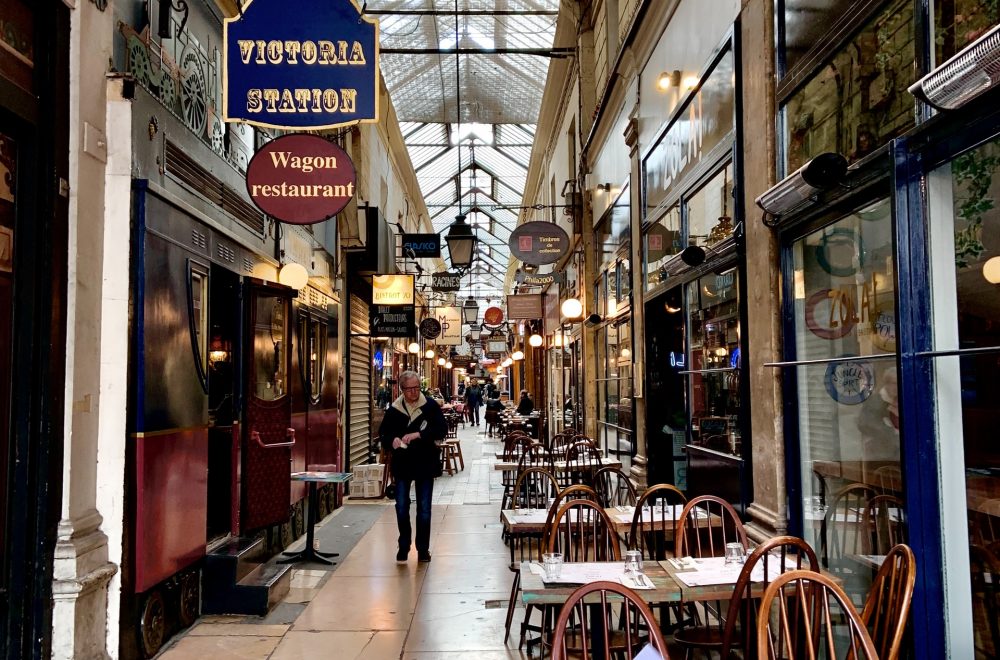
The hip 9éme arrondissement with its many beautiful covered passages stretches from the top of the 2éme to the south of Montmartre. It’s crisscrossed by various metro and bus lines.
The fastest and easiest way to get straight to the Eiffel Tower is by taking metro line 8 toward Balard from Chaussée d’Antin La Fayette or Opéra to École Militaire. If you’re closer to Pigalle, take bus 30 from Pigalle, direction Hôpital Européen George Pompidou, and get off at Tour Eiffel.
10éme, Canal Saint-Martin and More
Handy for the national and international train connections from Paris, it’s a little harder to get to the Eiffel Tower from the 10éme than other arrondissements.
Metro line 4 direction Bagneaux Lucie Aubrac takes you to Odéon, where you can hop on bus 86 from Rue de l’École de Médecine to Rapp La Bourdonnais. You can also take metro 5 toward Place d’Italie, change at République into line 9 toward Pont de Sèvres, and exit at Trocadéro.
11éme, From Oberkampf to Bastille
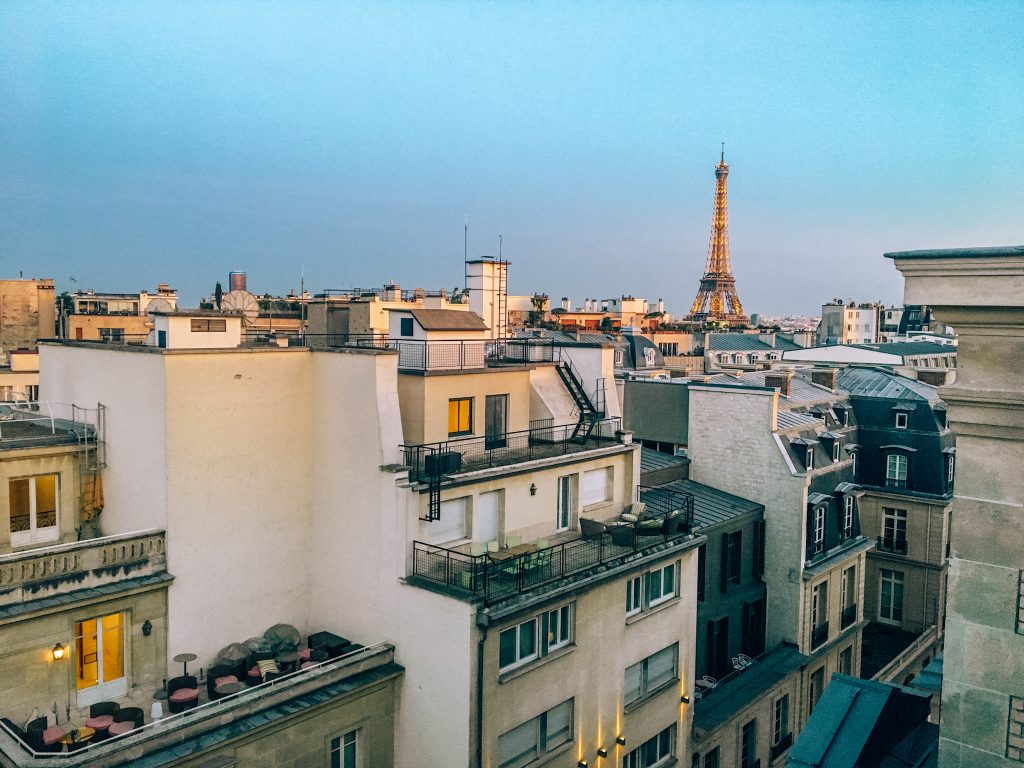
Quite spread out, the 11éme has the handy République in the north, and Bastille in the south, both excellent hubs.
For République connections, see 10éme, and from Bastille, take metro line 5, direction Place d’Italie, and change into RER C at Gare d’Austerlitz, into direction Versailles or Pontoise, and exit at Champ de Mars Tour Eiffel.
Alternatively, take the metro line 1 toward La Défense, and change at Charles de Gaulle-Étoile into metro line 6 (direction Nation) to either Trocadéro or Bir-Hakeim.
12éme, Around Gare de Lyon
Although it’s at the other end of Paris, the 12éme has a couple of direct connections to the Eiffel Tower, even if they take time.
If you’re taking the bus, estimate about an hour. However, you’ll get to indulge in plenty of sightseeing along the way. Bus 72 (direction Saint Cloud, takes you all the way from Gare de Lyon to Pont d’Iéna, all along the Seine.
If you’d rather ride the metro, take line 6, direction Charles de Gaulle Étoile, to either Bir-Hakeim or Trocadéro.
13éme, Modern Architecture and Floating Restaurants
From this often wrongly over-looked arrondissement, you can take the RER C from Bibliothèque François Mitterrand toward Versailles or Pontoise, and exit at Champ de Mars Tour Eiffel.
You can also take the fast metro line 14 from Bibliothèque François Mitterrand or Olympiades (direction Saint-Denis) to Madeleine and change into the 8 (direction Balard) to École Militaire.
14éme, Observatory and Catacombs
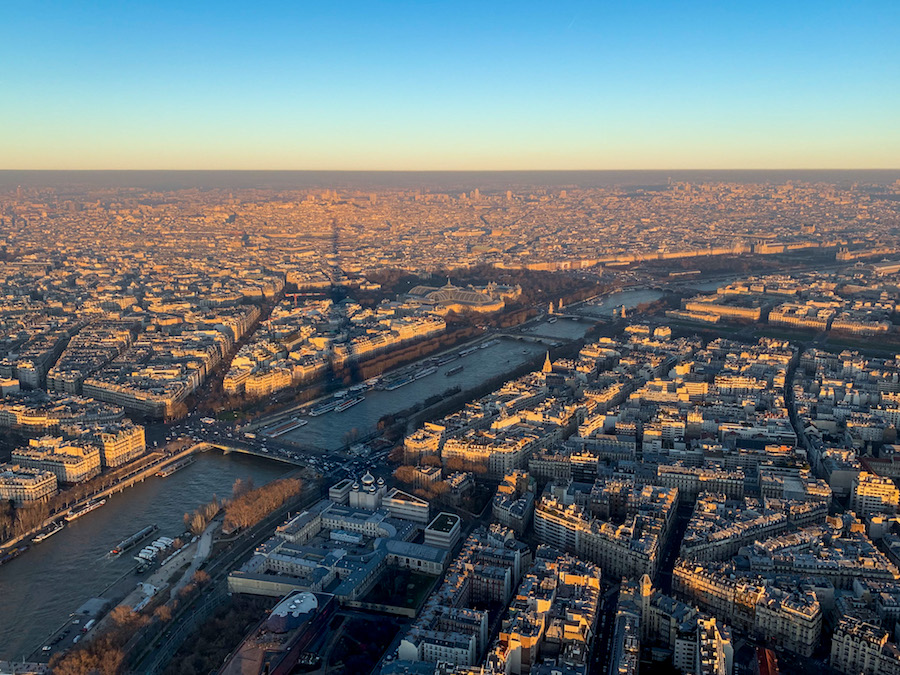
Throughout the Montparnasse neighborhood , you’ll not only spot the Eiffel Tower, but can also grab some great connections.
Take metro line 6 across the arrondissement, which will drop you right at Bir-Hakeim (direction Charles de Gaulle Étoile) to bus 82 from Montparnasse Cinémas (direction Hôpital Américain). This lets you get to stop Champ de Mars — Suffren within 20 minutes.
15éme, Many Hidden Treasures
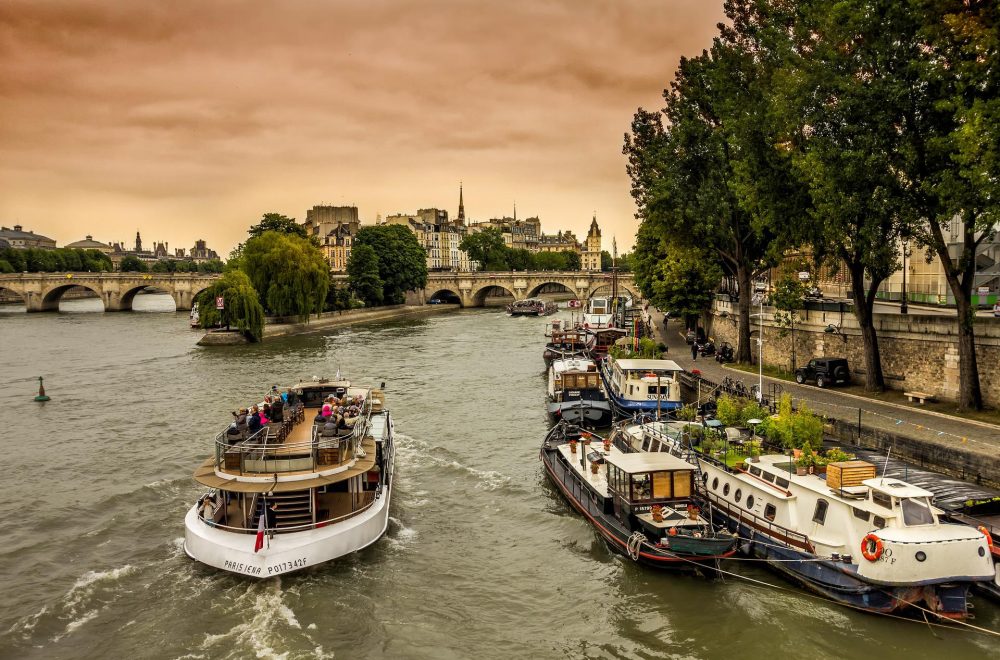
This arrondissement either sees you staying within steps from the Eiffel Tower, or right down at the outer south-western edge of the city.
If you’re near the Seine and don’t fancy the stroll, catch the RER C from Pont du Garigliano to Champ de Mars Tour Eiffel. Alternatively take metro line 8, which traverses the arrondissement in the direction of Créteil, and emerge at École Militaire, after a few short stops.
16éme, Passy and Fine Living
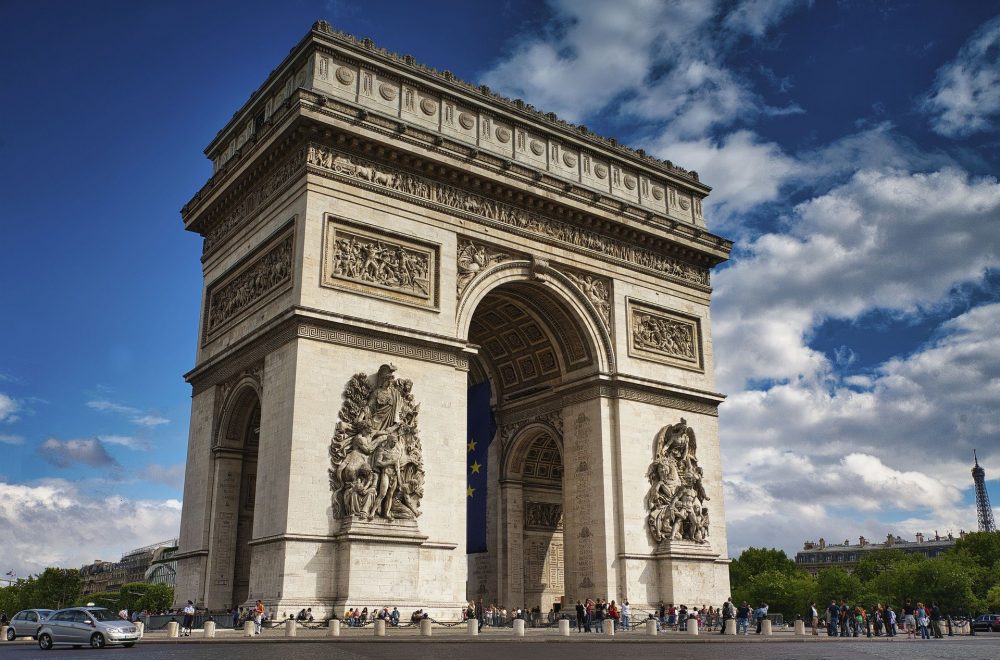
This arrondissement is the largest in Paris, made up of two merged arrondissements and encompassing the Bois de Boulogne.
If you’re near the Seine, or anywhere in Passy, the Eiffel Tower is just steps away. If you’re closer to the Arc de Triomphe , then trusty metro line 6, direction Nation, will take you to La Dame de Fer, the Iron Lady.
17éme, Parks and Cafés
The 17 th has various ways to get to the Eiffel Tower. If you’re near Pereire or Porte Maillot in the north of the arrondissement, then the RER C (into direction Saint Martin d’Étampes) takes you straight to Champ de Mars Tour Eiffel.
If you’re near Avenue de Ternes, hop onto metro line 6, direction Nation at Charles de Gaulle Étoile and get out at Bir-Hakeim.
Or take Bus 30 from Place de Ternes toward Hôpital Européen George Pompidou, and get off at Tour Eiffel. The bus option is the most scenic of the lot.
18éme, Montmartre and Beyond
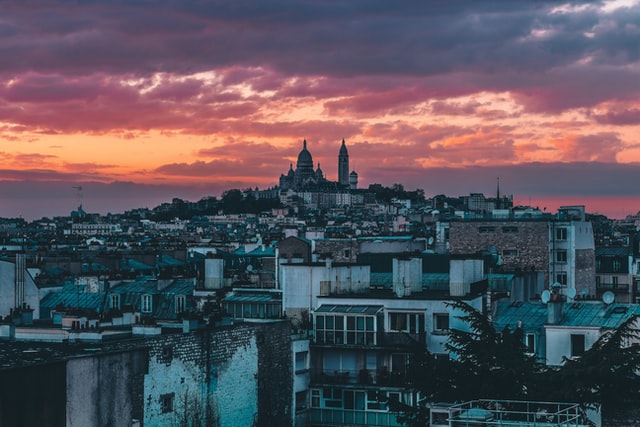
If you’re staying in the north of Montmartre , there’s a nearly one-hour long bus route, number 80 (direction Porte de Versailles), that takes you from Lamarck Caulaincourt to Bosquet Rapp on the Seine, or a bit further to École Militaire.
If you’re on the western side of the neighborhood, metro line 13, direction Châtillon-Montrouge from Guy Môquet or La Fourche, will take you to Invalides. From here, you can easily walk or change into the 8 to Balard, and get out at École Militaire.
19éme, Urban Art and Canals
On the outer north-eastern edge of Paris, this arrondissement might look far away from the Eiffel Tower, but you’re just one change away.
From Ourcq take metro line 5 toward Place d’Italie, and change at Oberkampf into the 9 to Pont de Sèvres. Then exit at Alma-Marceau for a brief walk along the Seine.
You could also continue on the 5 to Place d’Italie and change there into the 6, in the direction of Charles de Gaulle Étoile and exit at Bir-Hakeim. The 6 is overground so you’ll get a chance to see Paris on your ride.
20éme, Home of Père Lachaise
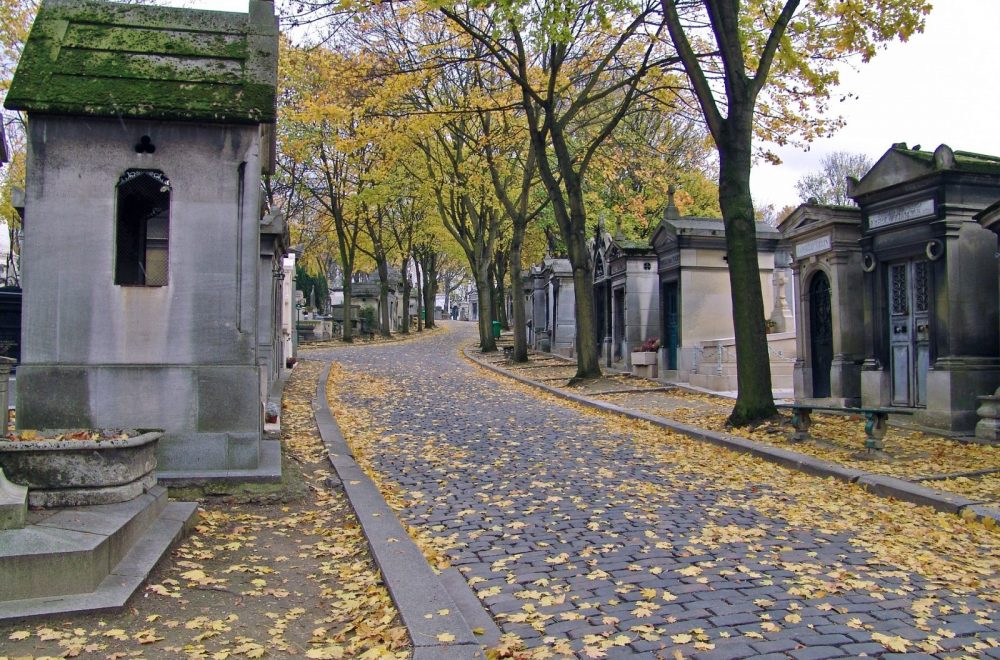
The hip 20éme spreads along the outer eastern edge of Paris. If you’re staying closer to Nation, it’s an easy hop onto metro line 6, direction Charles de Gaulle Étoile, for a lovely ride to Bir-Hakeim.
If you’re closer to Père Lachaise , catch metro line 9 (direction Pont de Sèvres) at Voltaires and exit at Alma-Marceau for a brief walk. Or hop on the bus 72 direction Parc de Saint-Cloud for one or two stops.
Disneyland Paris
If you are doing Euro Disney and staying at the Disneyland Paris resort, it’ll take just over an hour to get to the Eiffel Tower. Get onto RER A toward Poissy and change at Charles de Gaulle-Étoile onto metro line 6 toward Nation and exit at Bir-Hakeim.
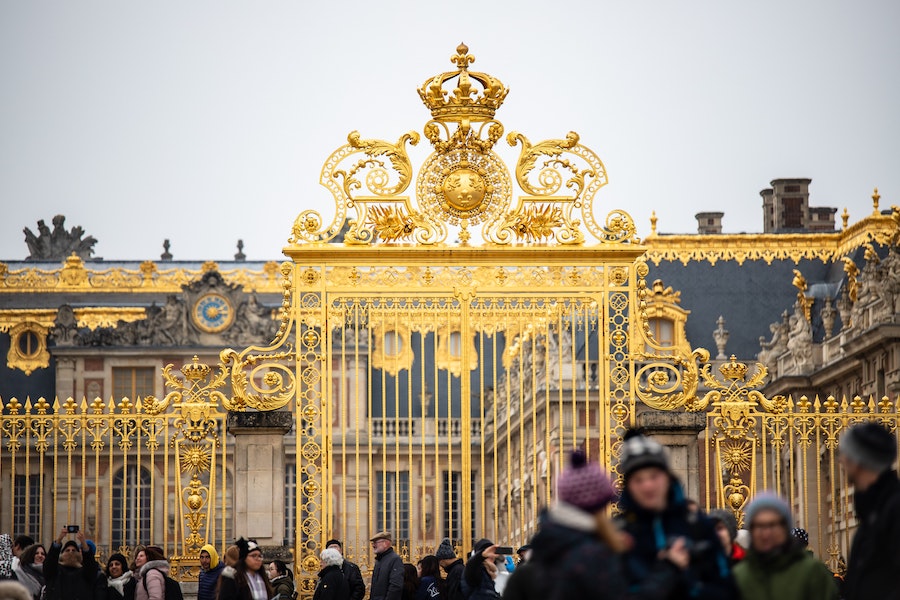
From both the Versailles train stations, Versailles Chantier, and Versailles Château Rive Gauche, you can take RER C (the merge after a couple of stations) toward Paris and exit at Champ de Mars Tour Eiffel. The exit closest to the Eiffel Tower is clearly marked.
It’s easy to get to the Eiffel Tower
Paris is very much about walking and taking public transport. Unless you’re low on time, I recommend you take buses or metro line 6 to get the beautiful views of the city.
Whatever your method of transport, be sure to enjoy the Eiffel Tower and everything else the city has to offer. If you want to make the most of your time at the Eiffel Tower, be sure to sign up for one of our guided tours . They’re the best way to see the Iron Lady.
See the Tower up close
Related guides.
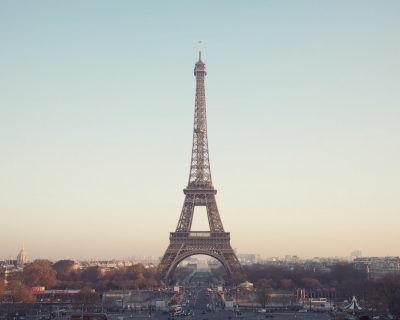
Best Views of the Eiffel Tower: 6 Top Spots for Photos
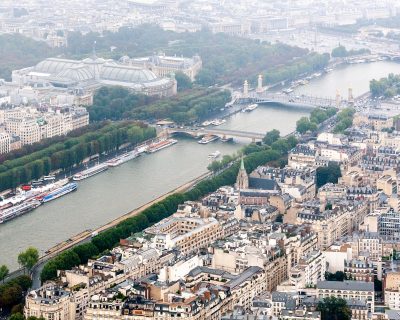

Everything You Can See From the Eiffel Tower (All 3 Levels)
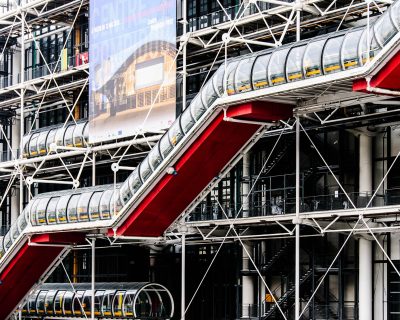
Paris Architecture: 5 Must-Sees Compared to the Eiffel Tower

How to Walk from Gare Du Nord to the Eiffel Tower in Paris!
Categories Europe , France
Paris is a big city but it’s also very walkable! Metro stops are everywhere but you quickly question your idea to get on at one stop and instead decide to walk towards the next and then before you know it you’ve practically walked your journey and seen the city properly rather than just seeing the underneath of it.
And that’s exactly what will happen if you want to go from Gare du Nord to the Eiffel Tower! Although you can go from Gare du Nord to the Eiffel Tower by taxi, bus and metro, you can also walk from Gare du Nord to the Eiffel Tower and in this Paris Walking Guide, I’m going to show you how!
Gare Du Nord to Eiffel Tower
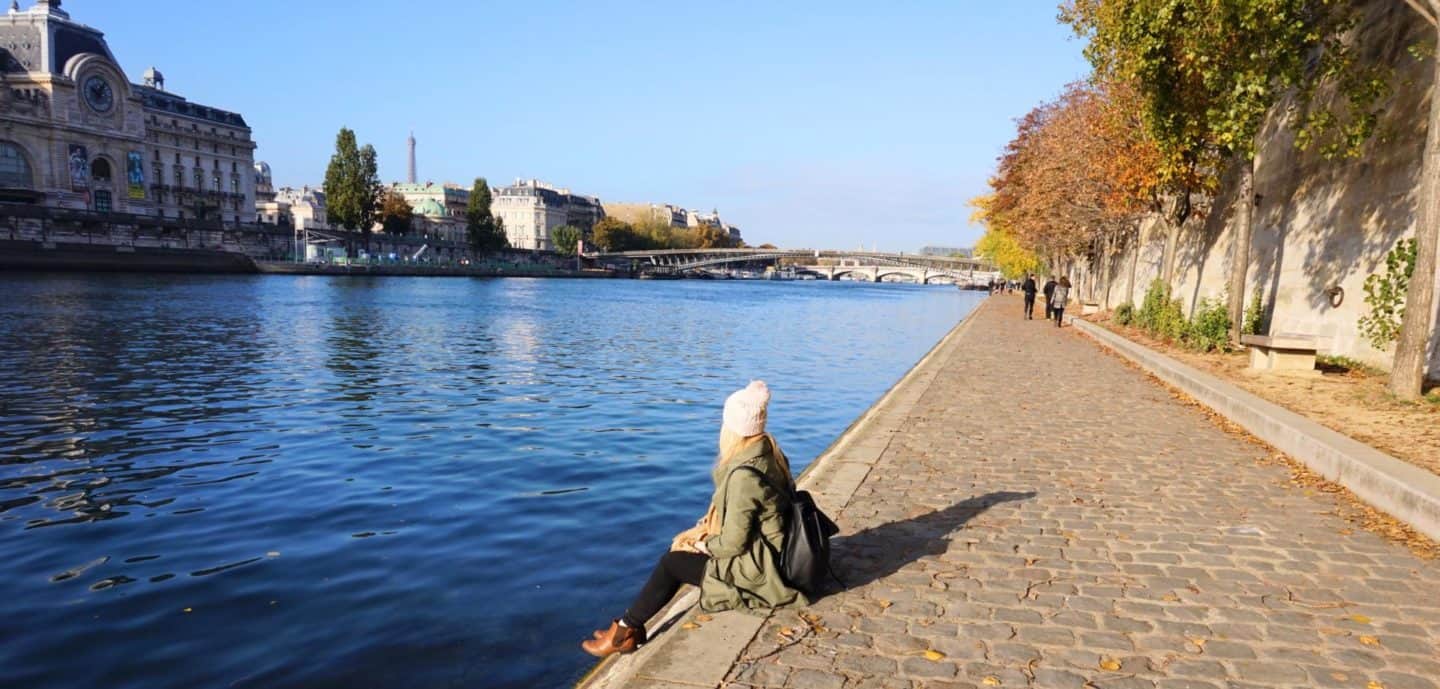
- More of my Paris Walking Guides:
- How to Walk from Canal Saint-Martin to Luxembourg Gardens via Le Marais.
- How to Walk from Montmartre to the Eiffel Tower via The Louvre.
Gare Du Nord to the Eiffel Tower Distance and Time Walking: 2-4 hours.
First off head towards Église Saint-Vincent-de-Paul from Gare Du Nord which is a really pretty Roman Catholic church with some cobblestone paths going down the side of it. (It was raining the day I went past and I had my luggage on me, so there’s no picture, you’ll have to see how pretty it is for yourself!)
Rue Montorgueil
Your next pin should be the top/north part of Rue Montorgueil (also, Rue is Street is French, just so you know as you’ll be seeing this a lot!), so from the above, walk down any street that takes your fancy until you reach Rue Montorgueil, this street is a walking street, and has been described as the finest market and shopping street in Paris as it’s filled with restaurants, cafes, bakeries, shops, market stalls etc. Its nothing ultra fancy but this is why I liked it, it reminded me of the real Paris and you’ll actually see locals hanging out here which is always good.
As i said, we happened to do this walk on a Sunday morning so it meant that this road was only just opening its shop doors so I definitely want to go back again when it’s fully open and bustling with life!
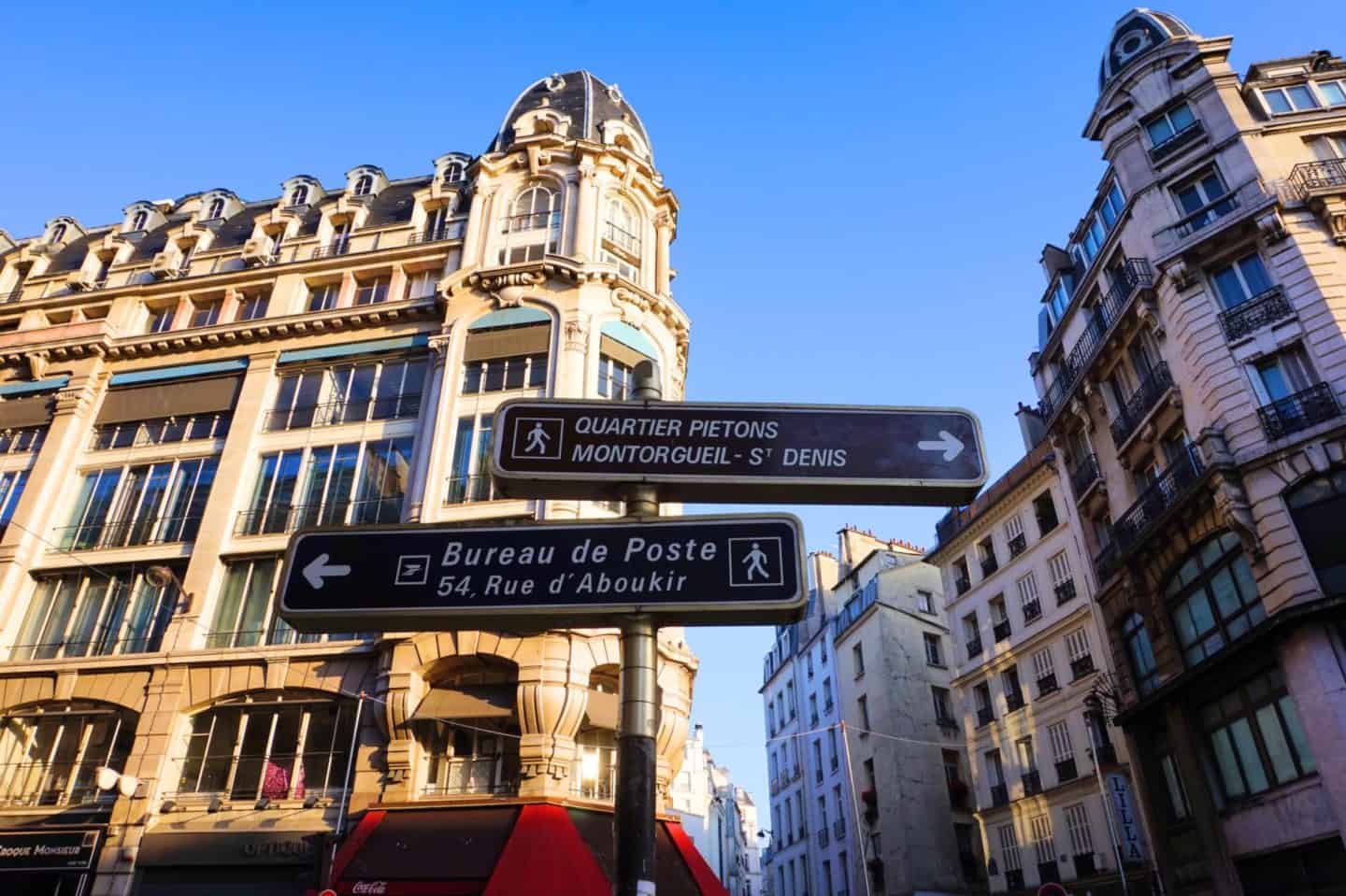
Wondering where to go after Paris? Check out this 2 week itinerary for Europe !
Rue Montmartre
Once you get to the bottom of Rue Montorgueil then take a right and you’ll come across Rue Montmartre (although don’t get confused with the actual Montmartre, that’s further North). We came across this road due to their Sunday market which is on from 7:00-15:00 and also on a Thursday 12:30-20:00 so if you’re there during that time then check out the local, fresh produce, if not then its worth taking a wander up the street anyway.
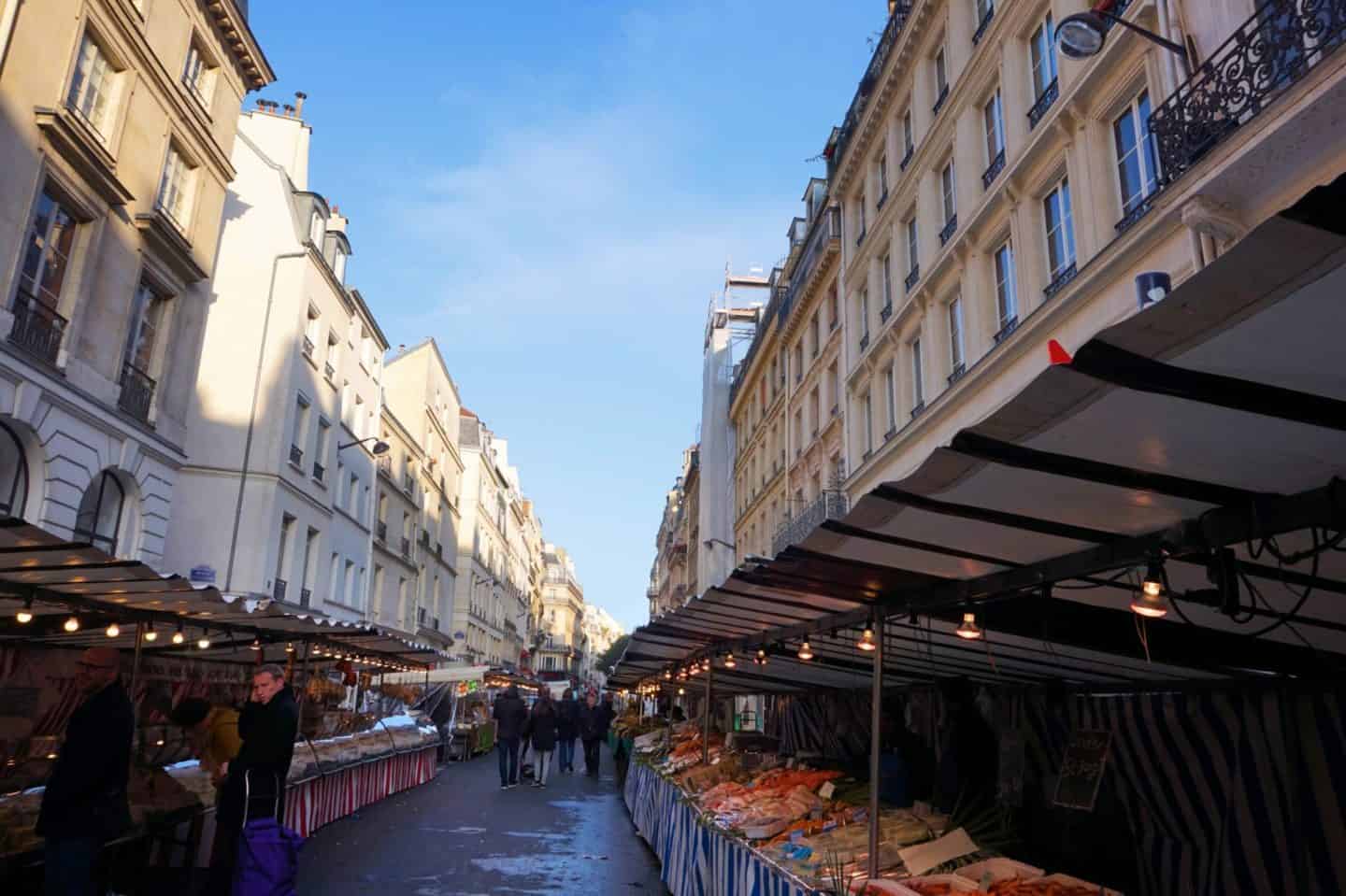
River Seine
Be sure to head back down the street though towards the river, and keep walking straight down the gardens in front of you, down Rue Du Pont Neuf, until you reach the beautiful River Seine !
I walked along the Northside of the river right along the bottom which was really nice as you’re away from the main road but you still get to see a lot of sights even though you’re further down.
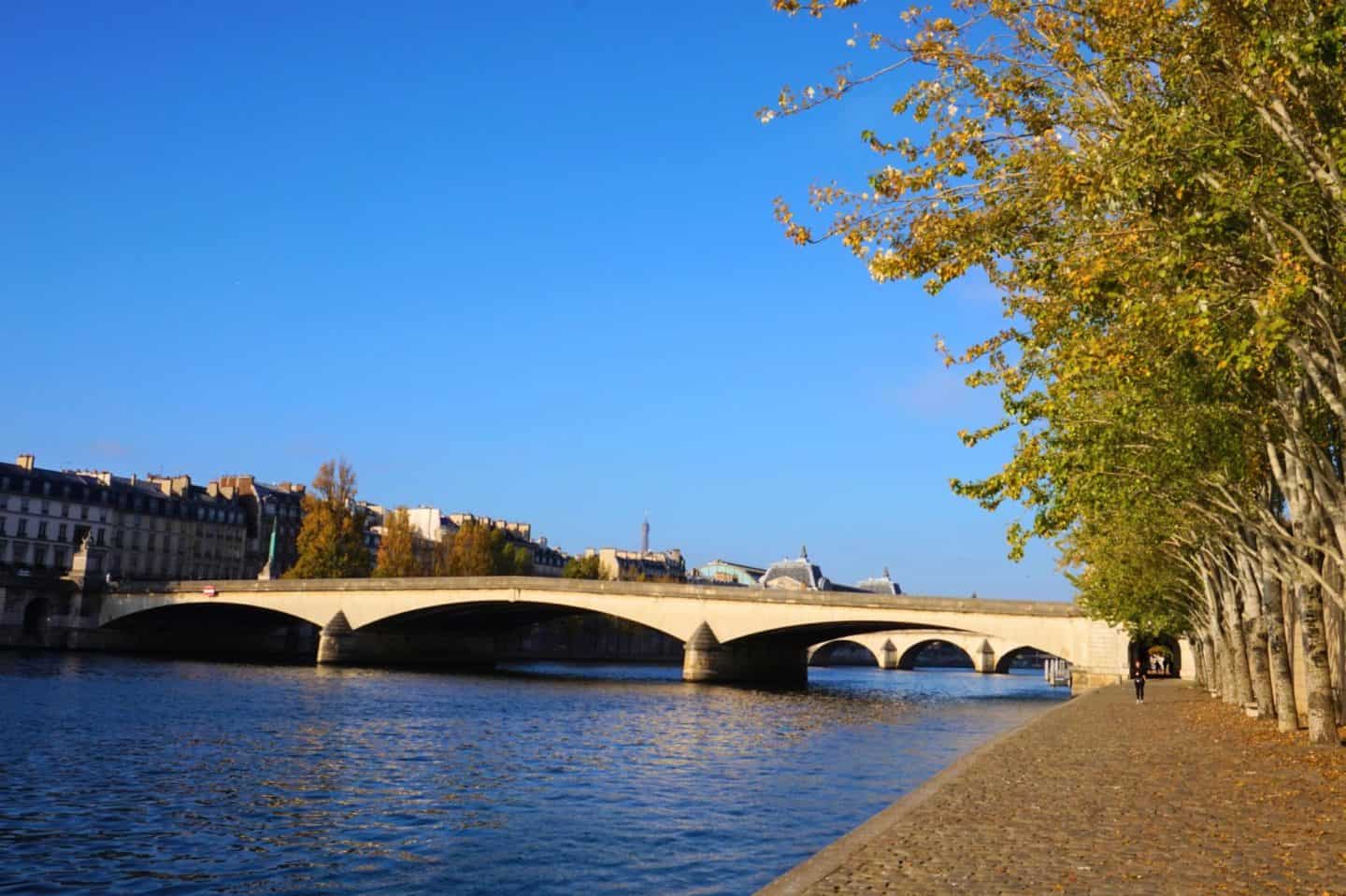
- 10 Things On My Paris Bucket List!
Whilst walking along the river be sure to keep your eye out for the famous Love Locks . The Bridge Pont Des Arts was the famous bridge to hang your love locks on however due to the weight, in the middle of 2015 they took them all off and replaced the bridge sides with a clear screen however you’ll still find plenty along the river edges and on other bridges in this area.
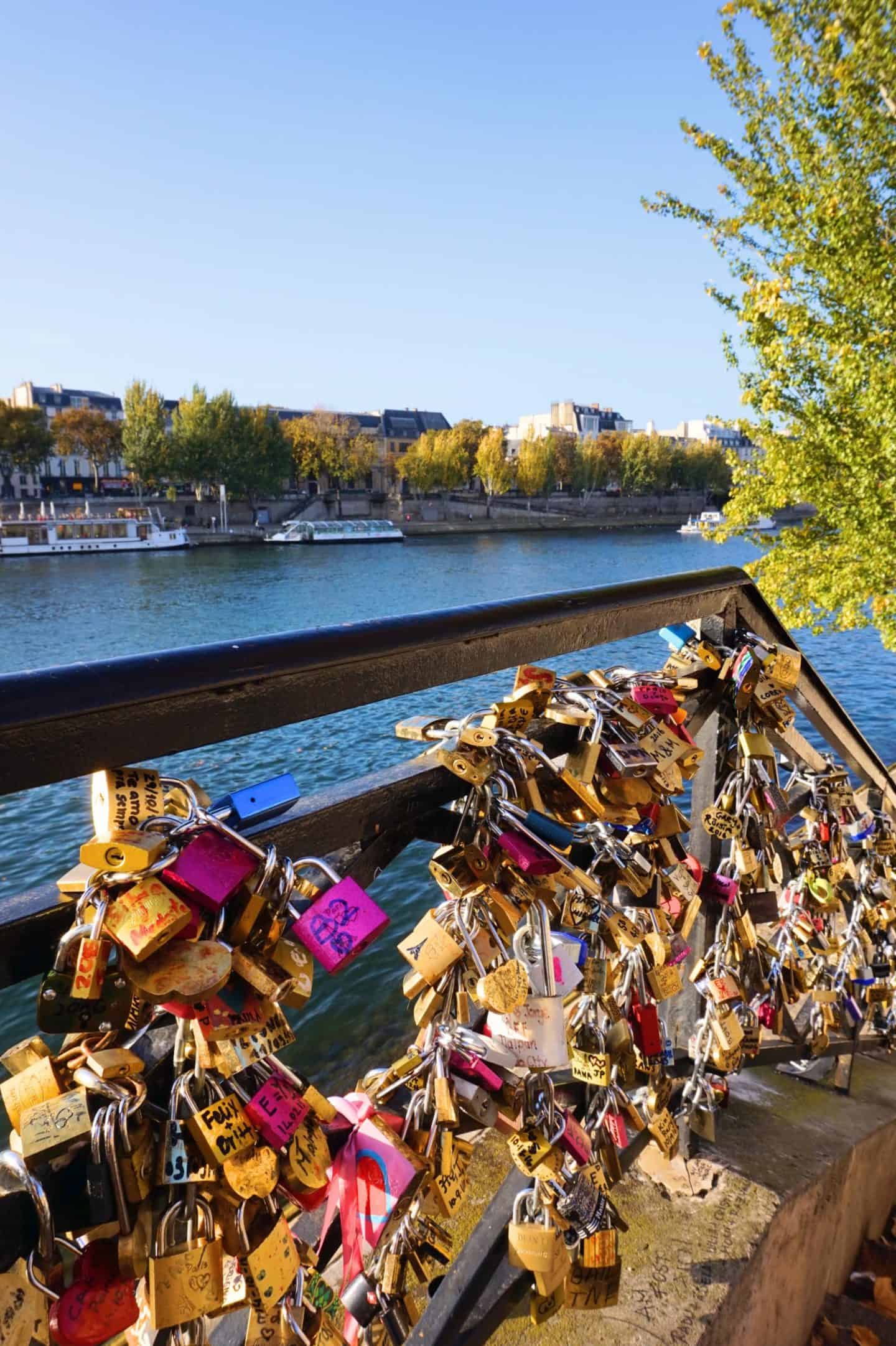
If you want to do a tour or pre-book a ticket ready for when you do this walk in Paris, the below options would work really well!
Rue Saint Dominique
After a few bridges and a bit more walking you’ll come to a bridge called Leopold Sedar Senghor and you can’t really miss it because it has lots of sections that go up and down it and this is the bridge that I suggest you take to get to the Southside of the River where you then need to keep walking straight, away from the River (don’t worry you’ll see it again soon) as you want to head to the start of Rue Saint Dominique .
This street starts off very quiet and gets busier the further up you get and for a while you really feel like you’ve really been thrown back in time to the old streets of the City!
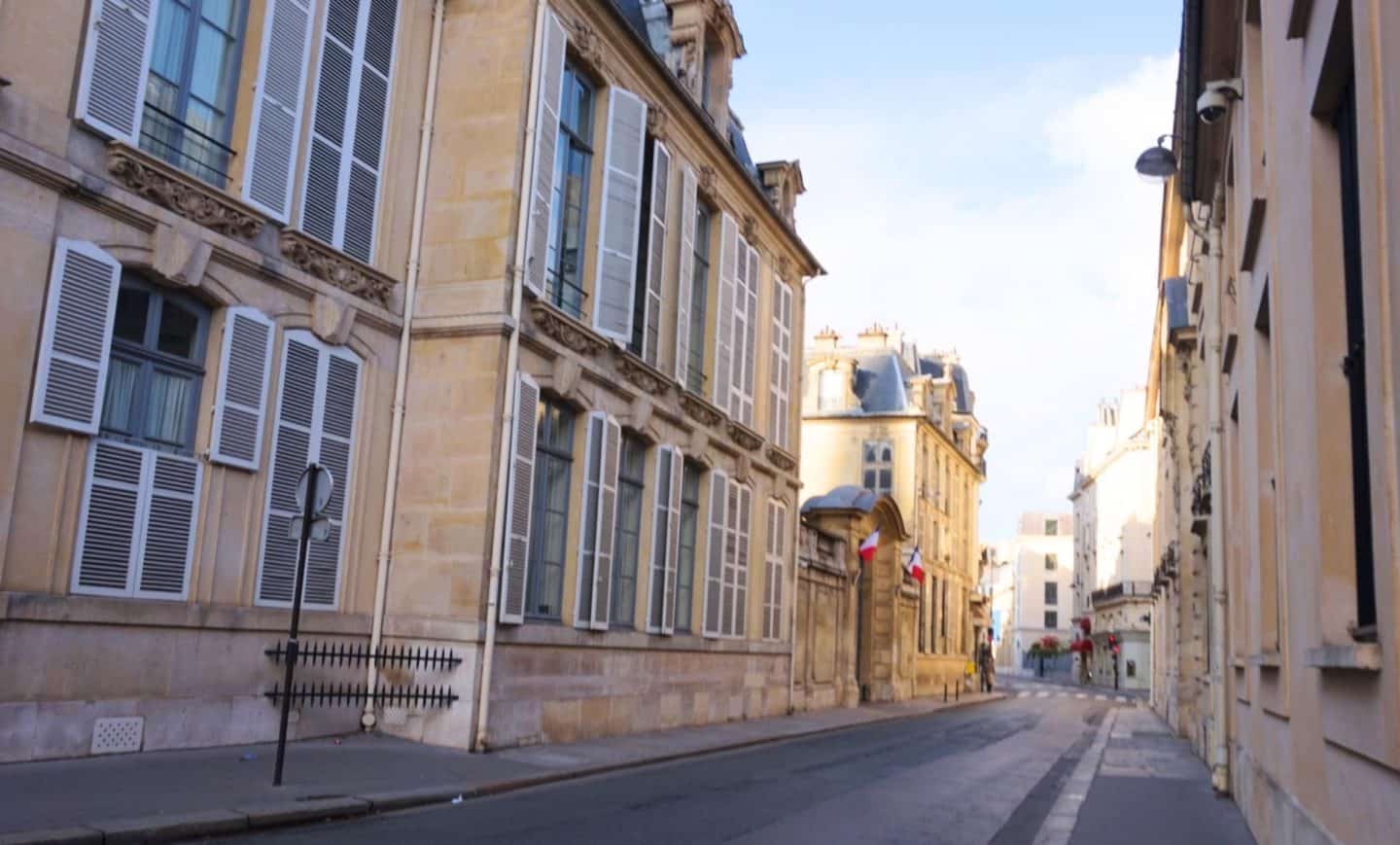
Cathedral Saint Louis des Invalides
Halfway up you’ll come across a big road (as seen below) and the gardens of the Cathedral Saint Louis des Invalides which is a very impressive building and in the summer months you’ll find lots of people relaxing on the grass in front.
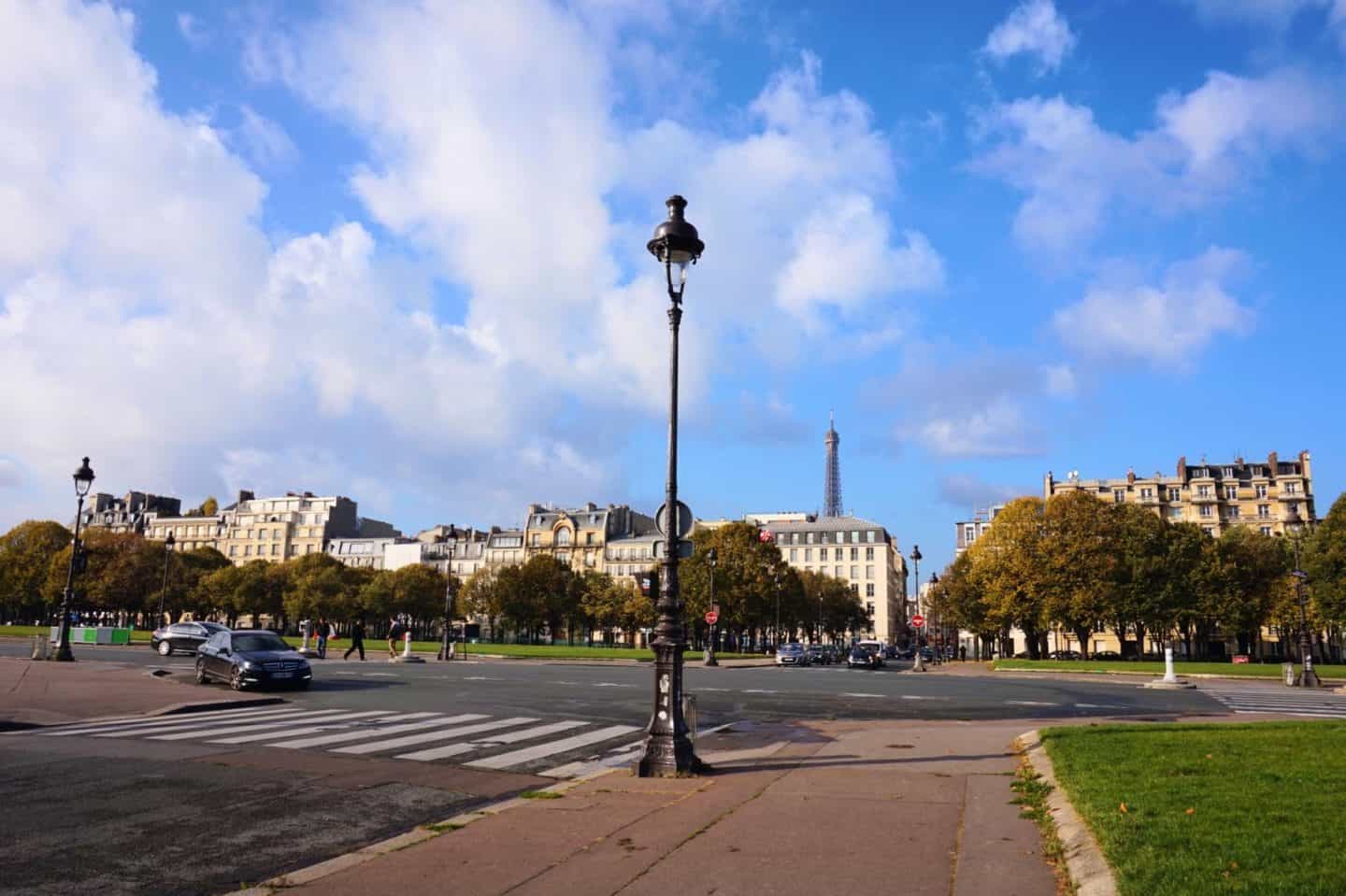
Eiffel Tower
If you wish to detour to see it properly then do but be sure to head back to Rue Saint Dominique as you now get to the section where all the cafes, shops and restaurants are and continuously up this road you’ll see the top of the Eiffel Tower poking out from the buildings which will get closer and closer until you cross another main road and stumble upon the lady herself!
This will end your walk from Gare Du Nord to the Eiffel Tower.
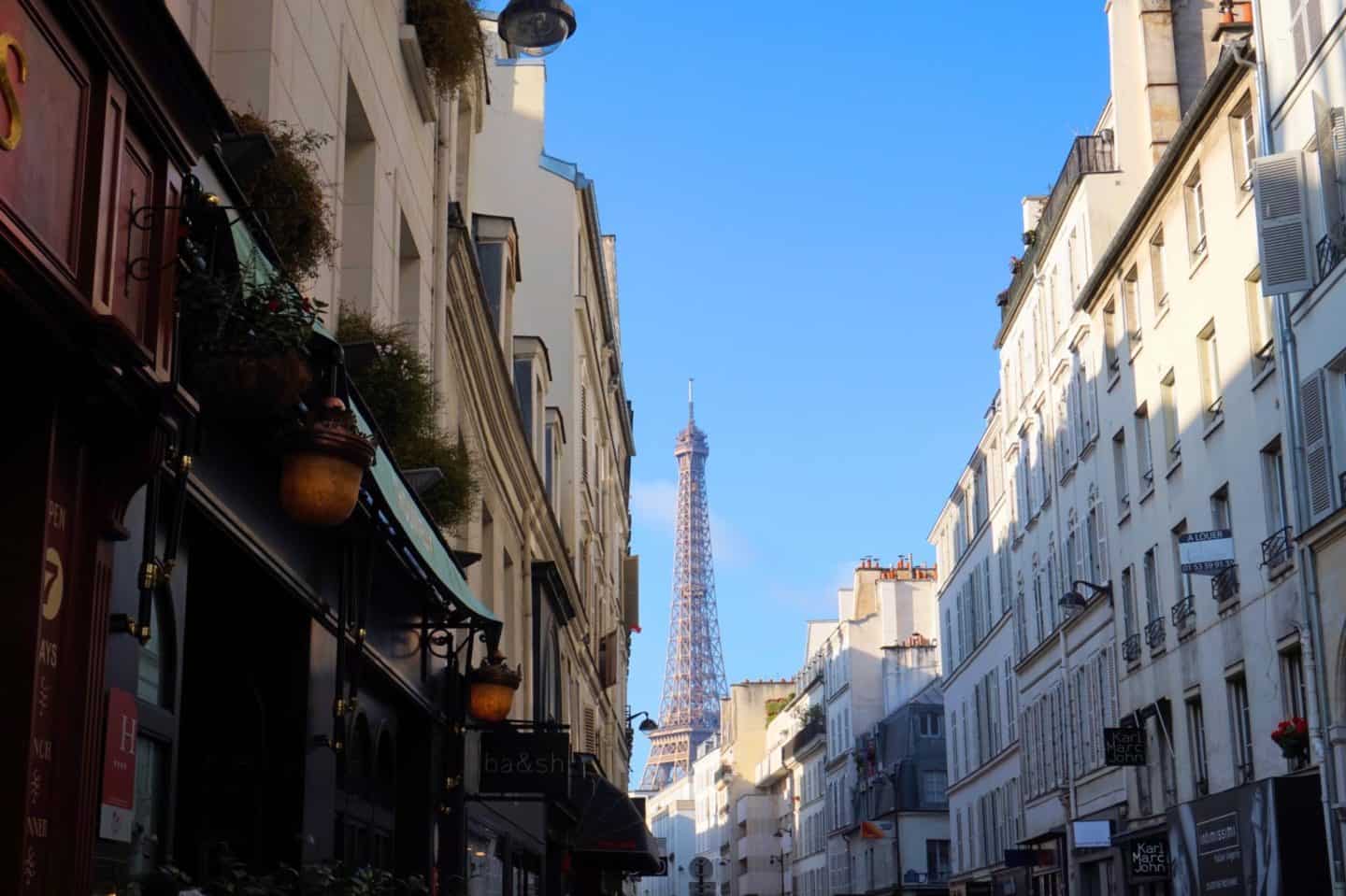
The Eiffel Tower is such an amazing sight, whether you’re seeing it for the first time or the 50th time so make sure you take lots of photos from all angles, relax on the grass nearby or on one of the many benches, enjoy the view and rest your legs after the walk from Gare Du Nord.
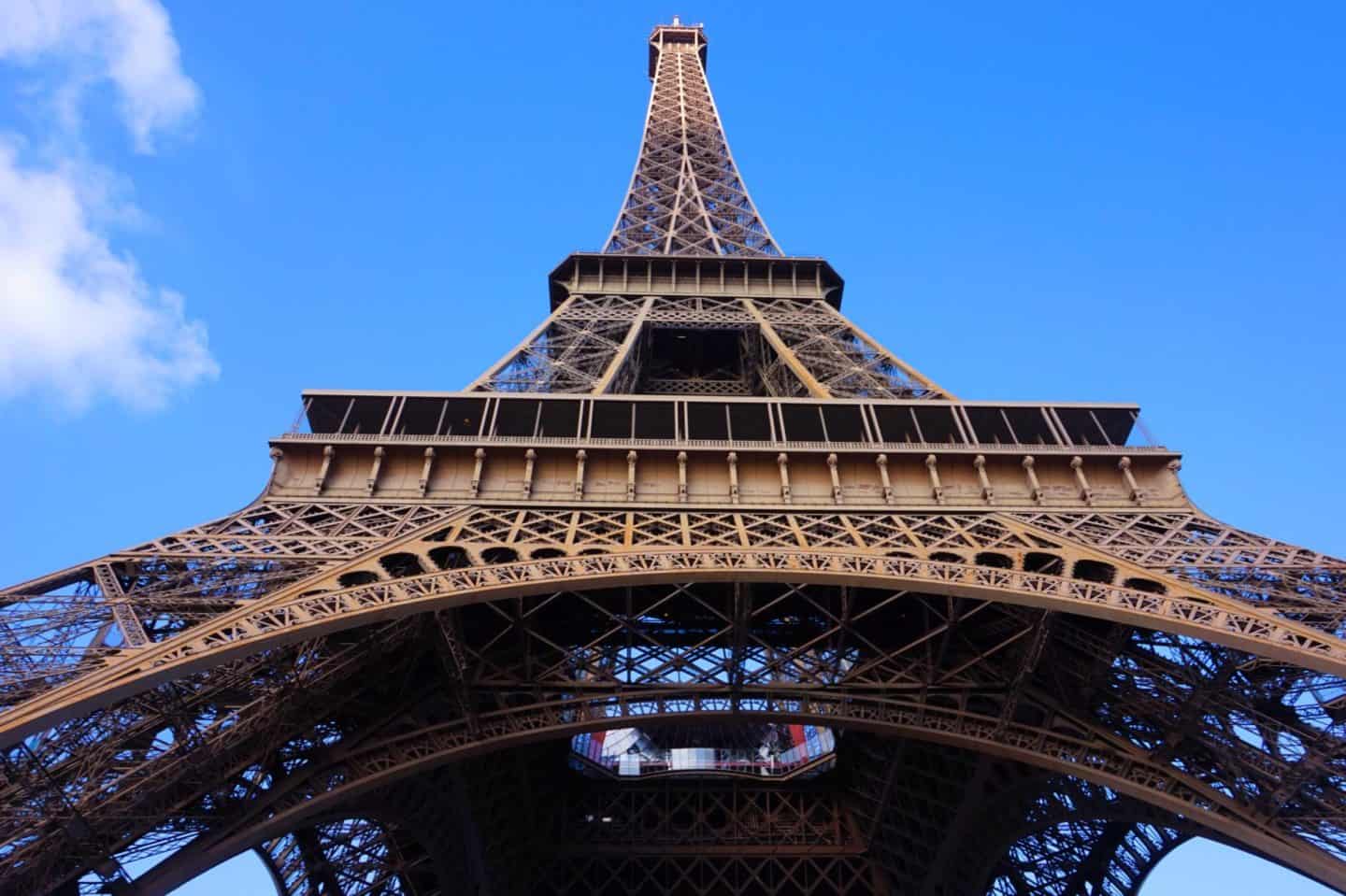
From here, Trocadero metro stop at the top end of the gardens of the Eiffel Tower is a good metro stop to take you back to where you’re staying, to Gare Du Nord or onto the next part of the city that you’re visiting!
If you’re arriving or leaving Paris by train, be sure to book tickets in advance on The Train Line for the best prices!
- More of my Paris Posts:
- 3 Days in Paris on a Budget!
If you liked this please share it! 🙂
- Click to share on Facebook (Opens in new window)
- Click to share on Twitter (Opens in new window)
- Click to share on Pinterest (Opens in new window)
- Click to email a link to a friend (Opens in new window)
By using this form you agree with the storage and handling of your data by this website. *
9 Things to See in Moscow's Red Square
Sir Francis Canker/Getty Images
In most cases, you'll be entering Red Square from the north, passing landmarks such as the Bolshoi Theatre and Duma parliament building as you make your way southward. Although you don't necessarily have to pass through the Voskresensky (or Resurrection in English) Gates in order to gain access to the square these days, they definitely provide a sense of arrival, to say nothing of the way their left arch frame's St. Basil's Cathedral if you look from just the right angle.
An interesting fact is that while a gate of some kind has stood here since the mid-16th century, the one you currently see wasn't built until 1994, having been destroyed in 1931 so that tanks could enter and exit Red Square during military parades.
St. Basil's Cathedral
TripSavvy / Christopher Larson
Few sights are as iconic not only of Moscow and Red Square but indeed of Russia than St. Basil's Cathedral, whose colorful, onion-shaped domes are a symbol of the country around the world. Officially known as the Cathedral of Vasily the Blessed, this church has stood since 1561, which is quite miraculous when you consider all the turbulent history that has transpired since then.
Among other things, religion was severely prohibited during the Soviet period , which led some to believe that this emblem of the Russian Orthodox church might not withstand the tenure of the USSR.
An interesting fact is that St. Basil's is the so-called "Kilometer Zero" of Russia; all of Moscow's main roads (which can take you anywhere in Russia) begin at the exits to Red Square. In this way, St. Basil's iconic status also has an extremely tangible element.
The Kremlin
TripSavvy / Christopher Larson
When you think of The Kremlin, it's unlikely that positive images enter your mind. The fact that simply saying the word "Kremlin" is too vague a descriptor (most Russian cities have their own Kremlin complexes; you should say "Moscow Kremlin") notwithstanding, this misunderstood place is incredibly beautiful, even if you don't like the policy that comes out of it.
Senate Square
In spite of its name, which refers to the role the building that rises above the square played during Imperial Russia, Senate Square is actually home to Russia's presidential administration, currently helmed by Vladimir Putin. In order to see where Russia's legislature operates from, walk just outside Red Square to the Duma parliament building.
Dormition Cathedral
Dating back to the year 1479, the gold-domed Dormition Cathedral pays homage to an Orthodox religious feast that commemorates the death of the Virgin Mary . As is the case with St. Basil's, it is curious that such a conspicuously religious structure was able to survive through the Soviet period.
Armoury Chamber
Though it takes its name from the fact that it housed Russia's royal arsenal when it was built in the 16th century, the most notable resident of the Kremlin's Armoury Chamber today is the Russian Diamond Fund.
Notable Kremlin Towers
Robert Schrader
The interior of the Moscow Kremlin is more beautiful and inviting than you'd expect, but the walls and towers that rise around it better live up to the intimidation with which the complex is associated.
Borovitskaya Tower
Named to commemorate the dense forest that once stood atop the mount where it's built, this tower is extremely picturesque. Built in the late 15th century, it's visible from most places in the square, and also as you walk along the Moskva River.
Nikolskaya Tower
Also built in the year 1491, this tower currently suffered destruction at the hands of Napoleon's army in the 19th century. What you see now is the result of an 1816 re-design and renovation, though artillery fire during the Russian Revolution also caused superficial damage to the tower, named to honor St. Nikolas of Mozhaysk , so it's difficult to know which elements of it are original.
Spasskaya Tower
Known in English as the "Savior's Tower," this iconic, star-topped tower is perhaps the best-known of all the Kremlin's towers. Built in 1491 like the other two towers on this list, it's certainly the most photographed. As a result of its proximity to St. Basil's, it often makes its way into tourists' pictures.
Mausoleum of Lenin
Just as it's strange to learn how many religious monuments survived through the Soviet period, it's a bit odd to think that Lenin's preserved body still sits in a mausoleum just beneath the walls of the Kremlin on Red Square, given the lack of consensus about the ultimate impact of his Revolution, even in Russia.
It's not guaranteed that you'll be able to see the body (which, believe it or not, seems to be improving with age ) when you go, and if you do you will likely have to wait in line, but even strolling past the outside of the Lenin Mausoleum, flanked by stone-faced guards that almost look like statues, illuminates the gravity of his body still being here.
GUM Shopping Center
You might cringe, at least initially, when you realize that one of the most iconic stops on a tour of Red Square is a department store—until you see said department store, that is. Built in 1893 and known during Soviet times as the State Department Store, GUM ( Glávnyj Universáľnyj Magazín or Main Universal Store in English) hearkens back to the grandeur of the late 19th century, both seen from the outside (especially, when lit up at night) and the interior, which might have you feeling like you're further west in Europe.
A trip inside GUM is a particularly good idea during winter, when frigid temperatures outside will have you savoring the heat, the quality of souvenirs, confections and other goods sold inside notwithstanding. Also, make sure not to confuse GUM with CDM, which sits near the Bolshoi Theatre, even though both are stunning and iconic in their own right.
State Historical Museum
The Russian State Historical Museum is located near Voskresensky Gates, though you should wait until after you've seen the first few attractions of Red Square and the Kremlin to head back there and go inside. To be sure, as you pass by its facade (whose late-19th century grandeur somewhat obscures that fact that it's currently a museum accessible to the public) you might not even think to try and gain entry.
Once inside the museum, you can plan to spend at least a couple of hours, given that artifacts here date back to the very beginning of the Russian state in the ninth century. As is the case with GUM, this will be a particularly alluring prospect if you visit in winter, when Moscow is arguably at its most beautiful, but certainly at its least tolerable.
Minin-Pozharsky Monument
It's somewhat easy to disregard this monument, which pays homage to the two Russian princes who ended the so-called "Time of Troubles" in the mid-16th century, during which Polish-Lithuanian forces occupied Russia, among other awful things including a famine. That's because the statue currently sits just at the base of St. Basil's Cathedral, which makes it very difficult to photograph or even see without being overwhelmed by that much more famous edifice.
Though the statue originally sat at the very center of Red Square, it came to be an obstacle to the movement of tanks during the Soviet period, much like the Voskresensky Gates. As a result, authorities moved it during that time, and it's stayed where you currently find it ever since.
Kazan Cathedral
Taken by itself, the smokey-pink Kazan Cathedral is an architectural marvel; originally built in the 17th century, the church you find here today, located just north of the GUM department store, dates back only to 1993.
Unfortunately, since it sits not only in the shadow of GUM, but also in the shadow St. Basil's and the Towers of the Kremlin, it's easy to miss entirely if you aren't looking. As a result, you might wait until you've seen just about everything else in Red Square before coming here to take photos, and to appreciate the understated beauty of this oft-overlooked cathedral.
Moskva River
As you head south from St. Basil's Cathedral to exit Red Square, make sure to walk onto Bolshoy Moskvoretskiy Bridge, which crosses the Moskva River. If you look due north, you can get an excellent shot of the church framed, on the left, by the towers of the Kremlin. Directing your gaze a bit to the west allows you to see the skyscrapers of Moscow City as they rise above the Kremlin's walls.
Walking westward along the riverbank is also a worthwhile excursion, for the views it provides of Red Square and the Kremlin, as well as the fact that doing so takes you to other iconic Moscow attractions, including Gorky Park and the Pushkin Museum. The views you enjoy from the river and the bridge are particularly stunning at night, though you should make sure you bring a tripod if you want to get a clear picture, given how strong winds over and near the river can be.
Moscow - Russian Rivers and Waterways Port of Call
Moscow Metro: The Complete Guide
25 Best Things to Do in Moscow
The Impressive Castles of Eastern Europe
St. Basil’s Cathedral in Moscow: Planning Your Visit
St. Petersburg, Russia
10 Must-Visit Palaces and Castles in Russia
Top 12 Things to Do in Kazan, Russia
The Top 12 Things to Do in Nizhny Novgorod, Russia
The Top 12 Things to Do in Novgorod, Russia
Soviet Sights in Moscow – Moscow USSR Sites
The Top 12 Things to Do in Astrakhan
The Top 15 Places to Visit in Russia
A Guide to Moscow: Capital of Russia, City of Domes
The Top 15 Things to Do in Bordeaux, France
A Guide to the 4th Arrondissement in Paris
Origins and Construction of the Eiffel Tower
It was for the 1889 Exposition Universelle , the date that marked the 100th anniversary of the French Revolution, that a great competition was launched in 1886.
The first digging work started on the 26th January 1887 . On the 31st March 1889, the Tower had been finished in record time – 2 years, 2 months and 5 days – and was established as a veritable technical feat .
- Une première version bien différente
- La construction
- Durée de construction record
- Le journaliste Émile Goudeau visitant le chantier au début de 1889 en décrit ainsi le spectacle.
- Les planches de Monsieur Eiffel
- Extrait de la "Protestation contre la Tour de M. Eiffel", 1887
Key figures
The construction schedule, the design of the eiffel tower.
The plan to build a tower 300 metres high was conceived as part of preparations for the World's Fair of 1889 .

The wager was to " study the possibility of erecting an iron tower on the Champ-de-Mars with a square base, 125 metres across and 300 metres tall ". Selected from among 107 projects, it was that of Gustave Eiffel, an entrepreneur, Maurice Koechlin and Emile Nouguier, both engineers, and Stephen Sauvestre, an architect, that was accepted.
Emile Nouguier and Maurice Koechlin , the two chief engineers in Eiffel's company, had the idea for a very tall tower in June 1884. It was to be designed like a large pylon with four columns of lattice work girders, separated at the base and coming together at the top , and joined to each other by more metal girders at regular intervals.
The tower project was a bold extension of this principle up to a height of 300 metres - equivalent to the symbolic figure of 1000 feet . On September 18 1884 Eiffel registered a patent "for a new configuration allowing the construction of metal supports and pylons capable of exceeding a height of 300 metres".
In order to make the project more acceptable to public opinion, Nouguier and Koechlin commissioned the architect Stephen Sauvestre to work on the project's appearance.

A quite different first edition
Sauvestre proposed stonework pedestals to dress the legs, monumental arches to link the columns and the first level, large glass-walled halls on each level, a bulb-shaped design for the top and various other ornamental features to decorate the whole of the structure. In the end the project was simplified, but certain elements such as the large arches at the base were retained, which in part give it its very characteristic appearance.
The curvature of the uprights is mathematically determined to offer the most efficient wind resistance possible. As Eiffel himself explains: "All the cutting force of the wind passes into the interior of the leading edge uprights. Lines drawn tangential to each upright with the point of each tangent at the same height, will always intersect at a second point, which is exactly the point through which passes the flow resultant from the action of the wind on that part of the tower support situated above the two points in question. Before coming together at the high pinnacle, the uprights appear to burst out of the ground, and in a way to be shaped by the action of the wind".

The construction
The assembly of the supports began on July 1, 1887 and was completed twenty-two months later.
All the elements were prepared in Eiffel’s factory located at Levallois-Perret on the outskirts of Paris. Each of the 18,000 pieces used to construct the Tower were specifically designed and calculated, traced out to an accuracy of a tenth of a millimetre and then put together forming new pieces around five metres each. A team of constructors, who had worked on the great metal viaduct projects, were responsible for the 150 to 300 workers on site assembling this gigantic erector set.
The rivet workers
All the metal pieces of the tower are held together by rivets, a well-refined method of construction at the time the Tower was constructed. First the pieces were assembled in the factory using bolts , later to be replaced one by one with thermally assembled rivets, which contracted during cooling thus ensuring a very tight fit. A team of four men was needed for each rivet assembled: one to heat it up, another to hold it in place, a third to shape the head and a fourth to beat it with a sledgehammer. Only a third of the 2,500,000 rivets used in the construction of the Tower were inserted directly on site.

The uprights rest on concrete foundations installed a few metres below ground-level on top of a layer of compacted gravel. Each corner edge rests on its own supporting block, applying to it a pressure of 3 to 4 kilograms per square centimetre , and each block is joined to the others by walls.
On the Seine side of the construction, the builders used watertight metal caissons and injected compressed air , so that they were able to work below the level of the water.

The tower was assembled using wooden scaffolding and small steam cranes mounted onto the tower itself.
The assembly of the first level was achieved by the use of twelve temporary wooden scaffolds, 30 metres high, and four larger scaffolds of 40 metres each.
"Sand boxes" and hydraulic jacks - replaced after use by permanent wedges - allowed the metal girders to be positioned to an accuracy of one millimetre.
On December 7, 1887 , the joining of the major girders up to the first level was completed. The pieces were hauled up by steam cranes, which themselves climbed up the Tower as they went along using the runners to be used for the Tower's lifts.
months to build the foundations
It only took five months to build the foundations and twenty-one to finish assembling the metal pieces of the Tower.
Considering the rudimentary means available at that period, this could be considered record speed. The assembly of the Tower was a marvel of precision , as all chroniclers of the period agree. The construction work began in January 1887 and was finished on March 31, 1889 . On the narrow platform at the top, Eiffel received his decoration from the Legion of Honour.
"A thick cloud of tar and coal smoke seized the throat , and we were deafened by the din of metal screaming beneath the hammer. Over there they were still working on the bolts: workmen with their iron bludgeons, perched on a ledge just a few centimetres wide, took turns at striking the bolts (these in fact were the rivets). One could have taken them for blacksmiths contentedly beating out a rhythm on an anvil in some village forge, except that these smiths were not striking up and down vertically, but horizontally, and as with each blow came a shower of sparks , these black figures, appearing larger than life against the background of the open sky, looked as if they were reaping lightning bolts in the clouds. "
Mr. Eiffel’s Blueprints
The following blueprints are copies of Gustave Eiffel’s originals, taken from the book La Tour de 300 mètres, Ed. Lemercier, Paris 1900

Debate and controversy surrounding the Eiffel Tower
Even before the end of its construction, the Tower was already at the heart of much debate. Enveloped in criticism from the biggest names in the world of Art and Literature, the Tower managed to stand its ground and achieve the success it deserved.

Various pamphlets and articles were published throughout the year of 1886, le 14 février 1887, la protestation des Artistes.
The "Protest against the Tower of Monsieur Eiffel", published in the newspaper Le Temps , is addressed to the World's Fair's director of works, Monsieur Alphand. It is signed by several big names from the world of literature and the arts : Charles Gounod, Guy de Maupassant, Alexandre Dumas junior, François Coppée, Leconte de Lisle, Sully Prudhomme, William Bouguereau, Ernest Meissonier, Victorien Sardou, Charles Garnier and others to whom posterity has been less kind.

Other satirists pushed the violent diatribe even further, hurling insults like : "this truly tragic street lamp" (Léon Bloy), "this belfry skeleton" (Paul Verlaine), "this mast of iron gymnasium apparatus, incomplete, confused and deformed" (François Coppée), "this high and skinny pyramid of iron ladders, this giant ungainly skeleton upon a base that looks built to carry a colossal monument of Cyclops, but which just peters out into a ridiculous thin shape like a factory chimney" (Maupassant), "a half-built factory pipe, a carcass waiting to be fleshed out with freestone or brick, a funnel-shaped grill, a hole-riddled suppository" (Joris-Karl Huysmans).

Once the Tower was finished the criticism burnt itself out in the presence of the completed masterpiece, and in the light of the enormous popular success with which it was greeted. It received two million visitors during the World's Fair of 1889.
" We come, we writers, painters, sculptors, architects, lovers of the beauty of Paris which was until now intact, to protest with all our strength and all our indignation, in the name of the underestimated taste of the French, in the name of French art and history under threat, against the erection in the very heart of our capital, of the useless and monstrous Eiffel Tower which popular ill-feeling, so often an arbiter of good sense and justice, has already christened the Tower of Babel. (...)
Is the City of Paris any longer to associate itself with the baroque and mercantile fancies of a builder of machines, thereby making itself irreparably ugly and bringing dishonour ? (...). To comprehend what we are arguing one only needs to imagine for a moment a tower of ridiculous vertiginous height dominating Paris,just like a gigantic black factory chimney, its barbarous mass overwhelming and humiliating all our monuments and belittling our works of architecture, which will just disappear before this stupefying folly.
And for twenty years we shall see spreading across the whole city, a city shimmering with the genius of so many centuries, we shall see spreading like an ink stain, the odious shadow of this odious column of bolted metal.
Gustave Eiffel’s Response
In an interview in the newspaper Le Temps of February 14 1887, Eiffel gave a reply to the artists' protest, neatly summing up his artistic doctrine:
"For my part I believe that the Tower will possess its own beauty . Are we to believe that because one is an engineer, one is not preoccupied by beauty in one's constructions, or that one does not seek to create elegance as well as solidity and durability ? Is it not true that the very conditions which give strength also conform to the hidden rules of harmony ? (...) Now to what phenomenon did I have to give primary concern in designing the Tower ? It was wind resistance.
Well then ! I hold that the curvature of the monument's four outer edges, which is as mathematical calculation dictated it should be (...) will give a great impression of strength and beauty , for it will reveal to the eyes of the observer the boldness of the design as a whole. Likewise the many empty spaces built into the very elements of construction will clearly display the constant concern not to submit any unnecessary surfaces to the violent action of hurricanes, which could threaten the stability of the edifice. Moreover there is an attraction in the colossal, and a singular delight to which ordinary theories of art are scarcely applicable ".
- Partager sur X
On the same theme

Gustave Eiffel
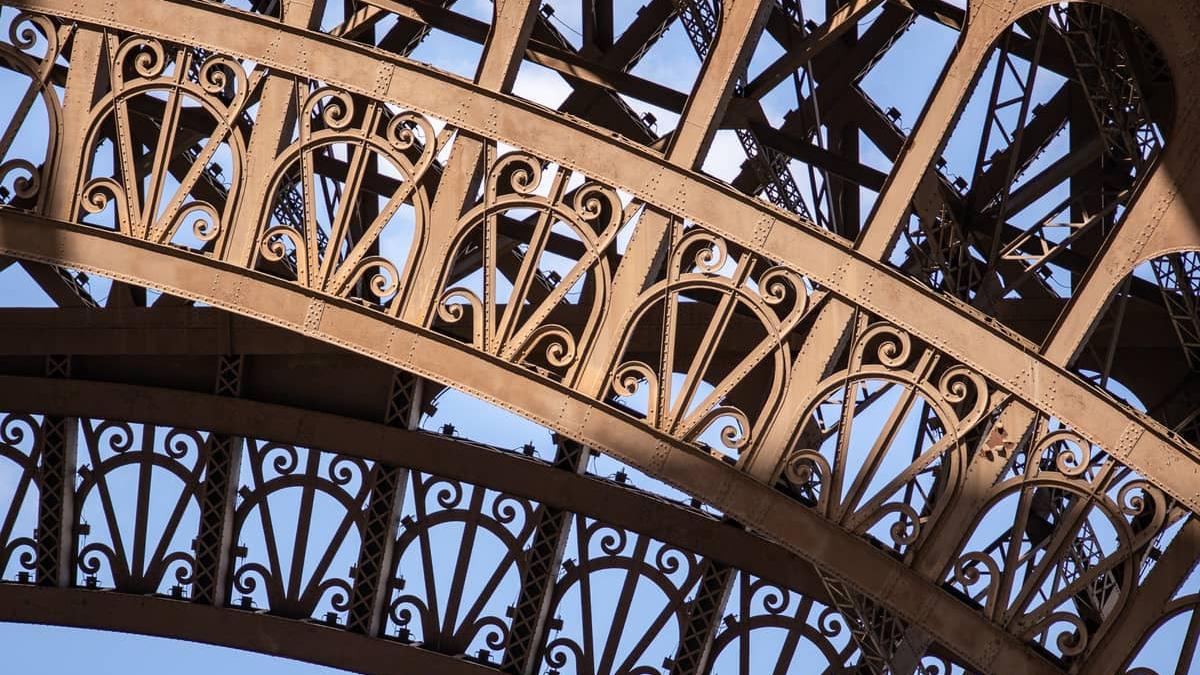
Eiffel tower facts, height & weight
An object of discord, desire and fascination, the Eiffel Tower never fails to impress. Enriched by a history full of new developments, here you can discover all of its key information.

History of the restaurants
For the Universal Exhibition of 1889, four majestic wooden pavilions designed by Stephen Sauvestre decked the platform on the first floor. Each restaurant could seat 500 people.
- Prices & Times
- Haut de page

COMMENTS
Discover or visit the tower: buy a ticket (10.5 to 26.10 € maximum for adults and 2.6 to 13.10 € for children and young people), news and practical information
Nous vous recommandons de venir à la tour Eiffel par les transports en commun parisiens : métro, RER, bus. La tour Eiffel est bien desservie par le métro : il y a 3 stations de métro à proximité. Sur la ligne 6, la station Bir Hakeim est la plus proche, à moins de 10 minutes à pied de l'entrée 1 (Allée des Refuzniks) du monument.
You can take a train from Gare du Nord (Paris Métro) to Eiffel Tower via Saint-Michel Notre-Dame and Champ de Mars Tour Eiffel in around 25 min. Alternatively, Bus RATP operates a bus from Square Montholon to Iéna every 20 minutes. Tickets cost €1 - €3 and the journey takes 26 min. Train operators. Paris RER. Bus operators.
The train station Le Champ de Mars - Tour Eiffel is a French railway station on the line: Les Invalides to Versailles-Rive-Gauche located on the boundary of a neighborhood known as Gros-Caillou in 7th arrondissement (district) and the neighborhood of Grenelle in the 15th arrondissement (district) of Paris.
The Tour Eiffel is located in Paris' 7th arrondissement, on the left bank of the Seine River. It's close to sights and attractions including the Bateaux-Mouches river-cruise boarding area, the Musée d'Orsay, the Trocadero and the Champ de Mars. {Browse & Book Eiffel Tower Tickets, Tours & Experiences Through Viator}
If you're near Pereire or Porte Maillot in the north of the arrondissement, then the RER C (into direction Saint Martin d'Étampes) takes you straight to Champ de Mars Tour Eiffel. If you're near Avenue de Ternes, hop onto metro line 6, direction Nation at Charles de Gaulle Étoile and get out at Bir-Hakeim.
An unforgettable tour, available in French or English and lasting around 90 minutes, in groups of no more than 12 people! Your Official Eiffel Tower Guide will ensure that everything goes smoothly on your visit while helping you access the different levels, especially the elevators. And to enhance this experience, the Eiffel Tower can offer you ...
Because of its central location, the Eiffel Tower is very well connected by the city's train network. The closest station to the Eiffel Tower is Champ de Mars/Tour Eiffel. You can take Metro or RER services to this stop. Then, simply hop off and stroll for less than ten minutes along the Seine to get to the monument.
Gare Du Nord to the Eiffel Tower Distance and Time Walking: 2-4 hours. First off head towards Église Saint-Vincent-de-Paul from Gare Du Nord which is a really pretty Roman Catholic church with some cobblestone paths going down the side of it.(It was raining the day I went past and I had my luggage on me, so there's no picture, you'll have to see how pretty it is for yourself!)
You can take a train from Mercure Paris Centre Tour Eiffel to Gare du Nord via Champ de Mars Tour Eiffel and Saint-Michel Notre-Dame in around 24 min. Alternatively, Bus RATP operates a bus from Passy - la Tour to Gare de l'Est every 20 minutes. Tickets cost €2 - €4 and the journey takes 49 min. Train operators. Paris RER.
You can take a train from Gare du Nord to Eiffel Tower via Saint-Michel Notre-Dame and Champ de Mars Tour Eiffel in around 25 min. Alternatively, Bus RATP operates a bus from Square Montholon to Iéna every 20 minutes. Tickets cost €1 - €3 and the journey takes 26 min. Train operators. Paris RER. Bus operators.
What companies run services between Mercure Paris Centre Tour Eiffel, France and Gare Montparnasse, Île-de-France, France? RATP Metro operates a vehicle from Bir-Hakeim to Montparnasse Bienvenue every 5 minutes. Tickets cost €2 and the journey takes 7 min. Alternatively, Bus RATP operates a bus from Champ de Mars - Suffren to Maine ...
Line C (Versailles / Saint Quentin en Yvelines - Anthony / Massy Palaiseau : stop - champ de Mars - Tour Eiffel) By bus: Bus 82, stops: "tour Eiffel" or "Montessuy". Bus 30, stop: « tour Eiffel ». Bus 86, stop: « Champ de Mars ». Bus 69, stop: "Champ de Mars". Bus 72, stop: « Pont d'Iena ». You can walk to the Eiffel Tower from all of ...
Contact. +33 (0)1 83 77 34 34. Everyday from 1.30pm to 5pm. Email: [email protected]. Public transportation. Metro Bir-Hakeim - Grenelle. Metro Trocadéro. RER C Champ de Mars Tour Eiffel. Bus 42, 69, 82, 87 - Champ de Mars.
You can take a train from Eiffel Tower to Gare de Paris-Nord via Champ de Mars Tour Eiffel and Saint-Michel Notre-Dame in around 24 min. Alternatively, Bus RATP operates a bus from Iéna to Gare de l'Est every 20 minutes. Tickets cost €2 - €3 and the journey takes 38 min. Train operators. Paris RER. Bus operators.
First called the 300-meter Tower, it soon took the name of the man who built it, Gustave Eiffel. The Tower opened to the public the same day as the World's Fair, on May 15, 1889. Controversy over the Tower raged in the art world before and during its construction, but thanks to the audacity of its architecture and design, visitors and Parisians ...
St. Basil's Cathedral. Few sights are as iconic not only of Moscow and Red Square but indeed of Russia than St. Basil's Cathedral, whose colorful, onion-shaped domes are a symbol of the country around the world. Officially known as the Cathedral of Vasily the Blessed, this church has stood since 1561, which is quite miraculous when you consider ...
The Design of the Eiffel Tower. The plan to build a tower 300 metres high was conceived as part of preparations for the World's Fair of 1889. Bolting the joint of two crossbowmen. (c): Collection Tour Eiffel. The wager was to " study the possibility of erecting an iron tower on the Champ-de-Mars with a square base, 125 metres across and 300 ...
RATP Metro operates a vehicle from Bir-Hakeim to Bercy every 5 minutes. Tickets cost €2 and the journey takes 20 min. Alternatively, Bus RATP operates a bus from Pont d'Iéna to Gare de Lyon - Maison de la RATP every 15 minutes. Tickets cost €3 - €5 and the journey takes 32 min. Train operators. Paris RER.